Plastic rods and tubes Stock Photos and Images
 Coloured acrylic rods Stock Photohttps://www.alamy.com/image-license-details/?v=1https://www.alamy.com/stock-photo-coloured-acrylic-rods-310019285.html
Coloured acrylic rods Stock Photohttps://www.alamy.com/image-license-details/?v=1https://www.alamy.com/stock-photo-coloured-acrylic-rods-310019285.htmlRFS0AGN9–Coloured acrylic rods
 Plastic sheeting and metal framing inside a commercial greenhouse. Stock Photohttps://www.alamy.com/image-license-details/?v=1https://www.alamy.com/plastic-sheeting-and-metal-framing-inside-a-commercial-greenhouse-image468802903.html
Plastic sheeting and metal framing inside a commercial greenhouse. Stock Photohttps://www.alamy.com/image-license-details/?v=1https://www.alamy.com/plastic-sheeting-and-metal-framing-inside-a-commercial-greenhouse-image468802903.htmlRM2J6KPTR–Plastic sheeting and metal framing inside a commercial greenhouse.
 New house concrete foundations with services pipes installed - Indre-et-Loire, France. Stock Photohttps://www.alamy.com/image-license-details/?v=1https://www.alamy.com/stock-photo-new-house-concrete-foundations-with-services-pipes-installed-indre-30122374.html
New house concrete foundations with services pipes installed - Indre-et-Loire, France. Stock Photohttps://www.alamy.com/image-license-details/?v=1https://www.alamy.com/stock-photo-new-house-concrete-foundations-with-services-pipes-installed-indre-30122374.htmlRMBN05B2–New house concrete foundations with services pipes installed - Indre-et-Loire, France.
 Bright colorful, dynamic and shiny solid rods floating in a wavy shape background.. 3d rendered background of Stock Photohttps://www.alamy.com/image-license-details/?v=1https://www.alamy.com/bright-colorful-dynamic-and-shiny-solid-rods-floating-in-a-wavy-shape-background-3d-rendered-background-of-image259826044.html
Bright colorful, dynamic and shiny solid rods floating in a wavy shape background.. 3d rendered background of Stock Photohttps://www.alamy.com/image-license-details/?v=1https://www.alamy.com/bright-colorful-dynamic-and-shiny-solid-rods-floating-in-a-wavy-shape-background-3d-rendered-background-of-image259826044.htmlRFW2M2NG–Bright colorful, dynamic and shiny solid rods floating in a wavy shape background.. 3d rendered background of
 Archive image from page 38 of Deep-ocean biodeterioration of materials (1965). Deep-ocean biodeterioration of materials deepoceanbiodete02mura Year: 1965 Figure B-14. Fibers of Manila rope destroyed by marine borers. Hundreds of borers are visible on the rope. Figure B-15. Three-foot-long plastic rods and tubes after 6 months on the ocean floor. 35 Stock Photohttps://www.alamy.com/image-license-details/?v=1https://www.alamy.com/archive-image-from-page-38-of-deep-ocean-biodeterioration-of-materials-1965-deep-ocean-biodeterioration-of-materials-deepoceanbiodete02mura-year-1965-figure-b-14-fibers-of-manila-rope-destroyed-by-marine-borers-hundreds-of-borers-are-visible-on-the-rope-figure-b-15-three-foot-long-plastic-rods-and-tubes-after-6-months-on-the-ocean-floor-35-image259541918.html
Archive image from page 38 of Deep-ocean biodeterioration of materials (1965). Deep-ocean biodeterioration of materials deepoceanbiodete02mura Year: 1965 Figure B-14. Fibers of Manila rope destroyed by marine borers. Hundreds of borers are visible on the rope. Figure B-15. Three-foot-long plastic rods and tubes after 6 months on the ocean floor. 35 Stock Photohttps://www.alamy.com/image-license-details/?v=1https://www.alamy.com/archive-image-from-page-38-of-deep-ocean-biodeterioration-of-materials-1965-deep-ocean-biodeterioration-of-materials-deepoceanbiodete02mura-year-1965-figure-b-14-fibers-of-manila-rope-destroyed-by-marine-borers-hundreds-of-borers-are-visible-on-the-rope-figure-b-15-three-foot-long-plastic-rods-and-tubes-after-6-months-on-the-ocean-floor-35-image259541918.htmlRMW274A6–Archive image from page 38 of Deep-ocean biodeterioration of materials (1965). Deep-ocean biodeterioration of materials deepoceanbiodete02mura Year: 1965 Figure B-14. Fibers of Manila rope destroyed by marine borers. Hundreds of borers are visible on the rope. Figure B-15. Three-foot-long plastic rods and tubes after 6 months on the ocean floor. 35
 . Deep-ocean biodeterioration of materials. Materials; Marine sediments. Figure 26. Plastic rods, tubes, and pipe and rubber vacuum hose with wrappings. Table 7. Breaking Strength of Rope Specimens Before and After Deep Sea Exposure Rope Diameter (in.) Breaking Strength (Ib)i^ Before Exposure After Exposure Cotton Manila Nylon Polypropylene 1/2 1/2 1/4 5/16 1,340 2,086 1,900 1,810 Deteriorated by marine organisms Deteriorated by marine organisms 1,480 1,750 J Average of two specimens for each test. 33. Please note that these images are extracted from scanned page images that may have been dig Stock Photohttps://www.alamy.com/image-license-details/?v=1https://www.alamy.com/deep-ocean-biodeterioration-of-materials-materials-marine-sediments-figure-26-plastic-rods-tubes-and-pipe-and-rubber-vacuum-hose-with-wrappings-table-7-breaking-strength-of-rope-specimens-before-and-after-deep-sea-exposure-rope-diameter-in-breaking-strength-ibi-before-exposure-after-exposure-cotton-manila-nylon-polypropylene-12-12-14-516-1340-2086-1900-1810-deteriorated-by-marine-organisms-deteriorated-by-marine-organisms-1480-1750-j-average-of-two-specimens-for-each-test-33-please-note-that-these-images-are-extracted-from-scanned-page-images-that-may-have-been-dig-image216082580.html
. Deep-ocean biodeterioration of materials. Materials; Marine sediments. Figure 26. Plastic rods, tubes, and pipe and rubber vacuum hose with wrappings. Table 7. Breaking Strength of Rope Specimens Before and After Deep Sea Exposure Rope Diameter (in.) Breaking Strength (Ib)i^ Before Exposure After Exposure Cotton Manila Nylon Polypropylene 1/2 1/2 1/4 5/16 1,340 2,086 1,900 1,810 Deteriorated by marine organisms Deteriorated by marine organisms 1,480 1,750 J Average of two specimens for each test. 33. Please note that these images are extracted from scanned page images that may have been dig Stock Photohttps://www.alamy.com/image-license-details/?v=1https://www.alamy.com/deep-ocean-biodeterioration-of-materials-materials-marine-sediments-figure-26-plastic-rods-tubes-and-pipe-and-rubber-vacuum-hose-with-wrappings-table-7-breaking-strength-of-rope-specimens-before-and-after-deep-sea-exposure-rope-diameter-in-breaking-strength-ibi-before-exposure-after-exposure-cotton-manila-nylon-polypropylene-12-12-14-516-1340-2086-1900-1810-deteriorated-by-marine-organisms-deteriorated-by-marine-organisms-1480-1750-j-average-of-two-specimens-for-each-test-33-please-note-that-these-images-are-extracted-from-scanned-page-images-that-may-have-been-dig-image216082580.htmlRMPFFBF0–. Deep-ocean biodeterioration of materials. Materials; Marine sediments. Figure 26. Plastic rods, tubes, and pipe and rubber vacuum hose with wrappings. Table 7. Breaking Strength of Rope Specimens Before and After Deep Sea Exposure Rope Diameter (in.) Breaking Strength (Ib)i^ Before Exposure After Exposure Cotton Manila Nylon Polypropylene 1/2 1/2 1/4 5/16 1,340 2,086 1,900 1,810 Deteriorated by marine organisms Deteriorated by marine organisms 1,480 1,750 J Average of two specimens for each test. 33. Please note that these images are extracted from scanned page images that may have been dig
 . Deep-ocean biodeterioration of materials. Materials; Marine sediments. Figure 26. Plastic rods, tubes, and pipe and rubber vacuum hose with wrappings. Table 7. Breaking Strength of Rope Specimens Before and After Deep Sea Exposure Rope Diameter (in.) Breaking Strength (Ib)i^ Before Exposure After Exposure Cotton Manila Nylon Polypropylene 1/2 1/2 1/4 5/16 1,340 2,086 1,900 1,810 Deteriorated by marine organisms Deteriorated by marine organisms 1,480 1,750 J Average of two specimens for each test. 33. Please note that these images are extracted from scanned page images that may have been dig Stock Photohttps://www.alamy.com/image-license-details/?v=1https://www.alamy.com/deep-ocean-biodeterioration-of-materials-materials-marine-sediments-figure-26-plastic-rods-tubes-and-pipe-and-rubber-vacuum-hose-with-wrappings-table-7-breaking-strength-of-rope-specimens-before-and-after-deep-sea-exposure-rope-diameter-in-breaking-strength-ibi-before-exposure-after-exposure-cotton-manila-nylon-polypropylene-12-12-14-516-1340-2086-1900-1810-deteriorated-by-marine-organisms-deteriorated-by-marine-organisms-1480-1750-j-average-of-two-specimens-for-each-test-33-please-note-that-these-images-are-extracted-from-scanned-page-images-that-may-have-been-dig-image231803951.html
. Deep-ocean biodeterioration of materials. Materials; Marine sediments. Figure 26. Plastic rods, tubes, and pipe and rubber vacuum hose with wrappings. Table 7. Breaking Strength of Rope Specimens Before and After Deep Sea Exposure Rope Diameter (in.) Breaking Strength (Ib)i^ Before Exposure After Exposure Cotton Manila Nylon Polypropylene 1/2 1/2 1/4 5/16 1,340 2,086 1,900 1,810 Deteriorated by marine organisms Deteriorated by marine organisms 1,480 1,750 J Average of two specimens for each test. 33. Please note that these images are extracted from scanned page images that may have been dig Stock Photohttps://www.alamy.com/image-license-details/?v=1https://www.alamy.com/deep-ocean-biodeterioration-of-materials-materials-marine-sediments-figure-26-plastic-rods-tubes-and-pipe-and-rubber-vacuum-hose-with-wrappings-table-7-breaking-strength-of-rope-specimens-before-and-after-deep-sea-exposure-rope-diameter-in-breaking-strength-ibi-before-exposure-after-exposure-cotton-manila-nylon-polypropylene-12-12-14-516-1340-2086-1900-1810-deteriorated-by-marine-organisms-deteriorated-by-marine-organisms-1480-1750-j-average-of-two-specimens-for-each-test-33-please-note-that-these-images-are-extracted-from-scanned-page-images-that-may-have-been-dig-image231803951.htmlRMRD3G8F–. Deep-ocean biodeterioration of materials. Materials; Marine sediments. Figure 26. Plastic rods, tubes, and pipe and rubber vacuum hose with wrappings. Table 7. Breaking Strength of Rope Specimens Before and After Deep Sea Exposure Rope Diameter (in.) Breaking Strength (Ib)i^ Before Exposure After Exposure Cotton Manila Nylon Polypropylene 1/2 1/2 1/4 5/16 1,340 2,086 1,900 1,810 Deteriorated by marine organisms Deteriorated by marine organisms 1,480 1,750 J Average of two specimens for each test. 33. Please note that these images are extracted from scanned page images that may have been dig
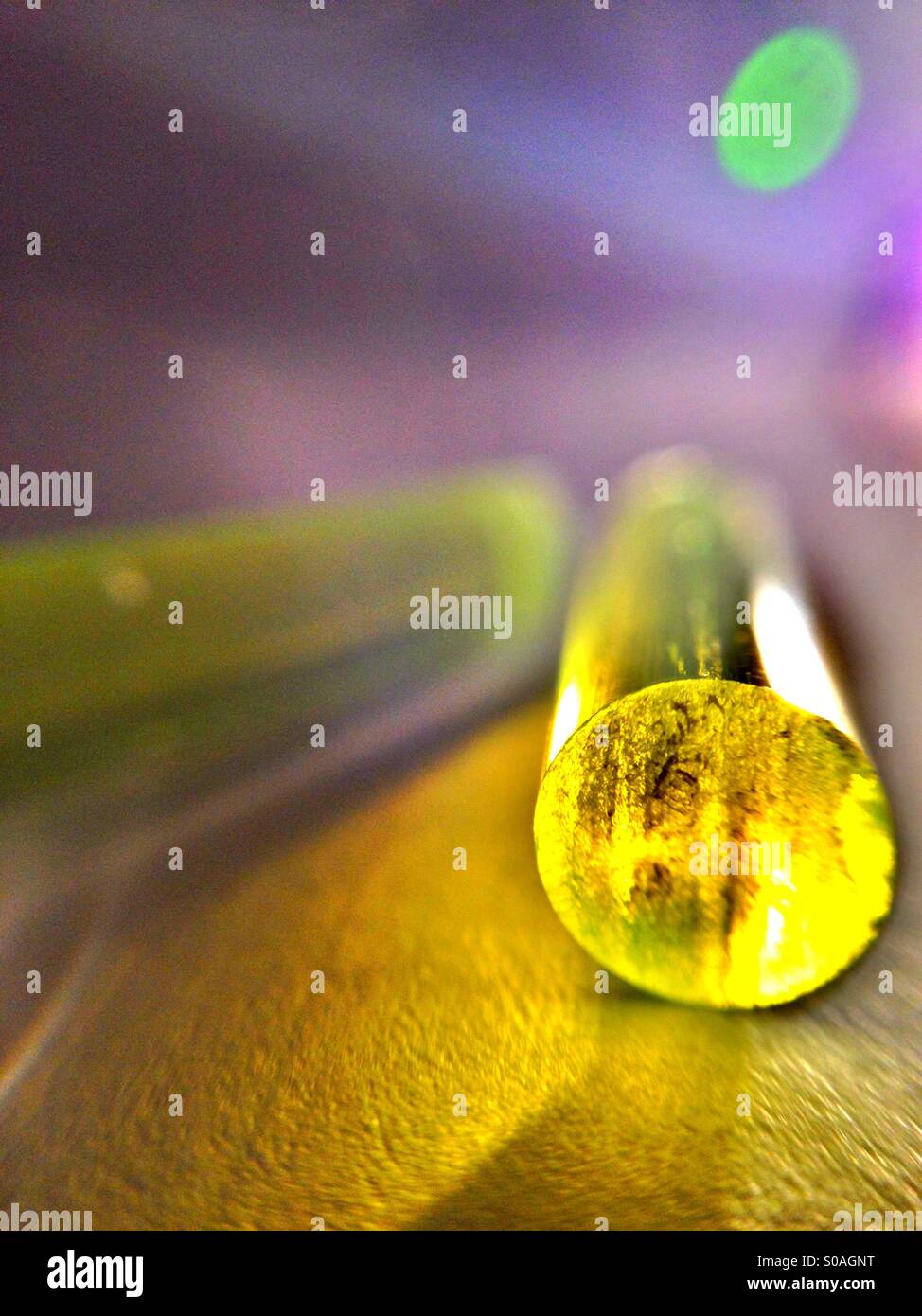 HDR view of Amber coloured acrylic rods Stock Photohttps://www.alamy.com/image-license-details/?v=1https://www.alamy.com/stock-photo-hdr-view-of-amber-coloured-acrylic-rods-310019300.html
HDR view of Amber coloured acrylic rods Stock Photohttps://www.alamy.com/image-license-details/?v=1https://www.alamy.com/stock-photo-hdr-view-of-amber-coloured-acrylic-rods-310019300.htmlRFS0AGNT–HDR view of Amber coloured acrylic rods
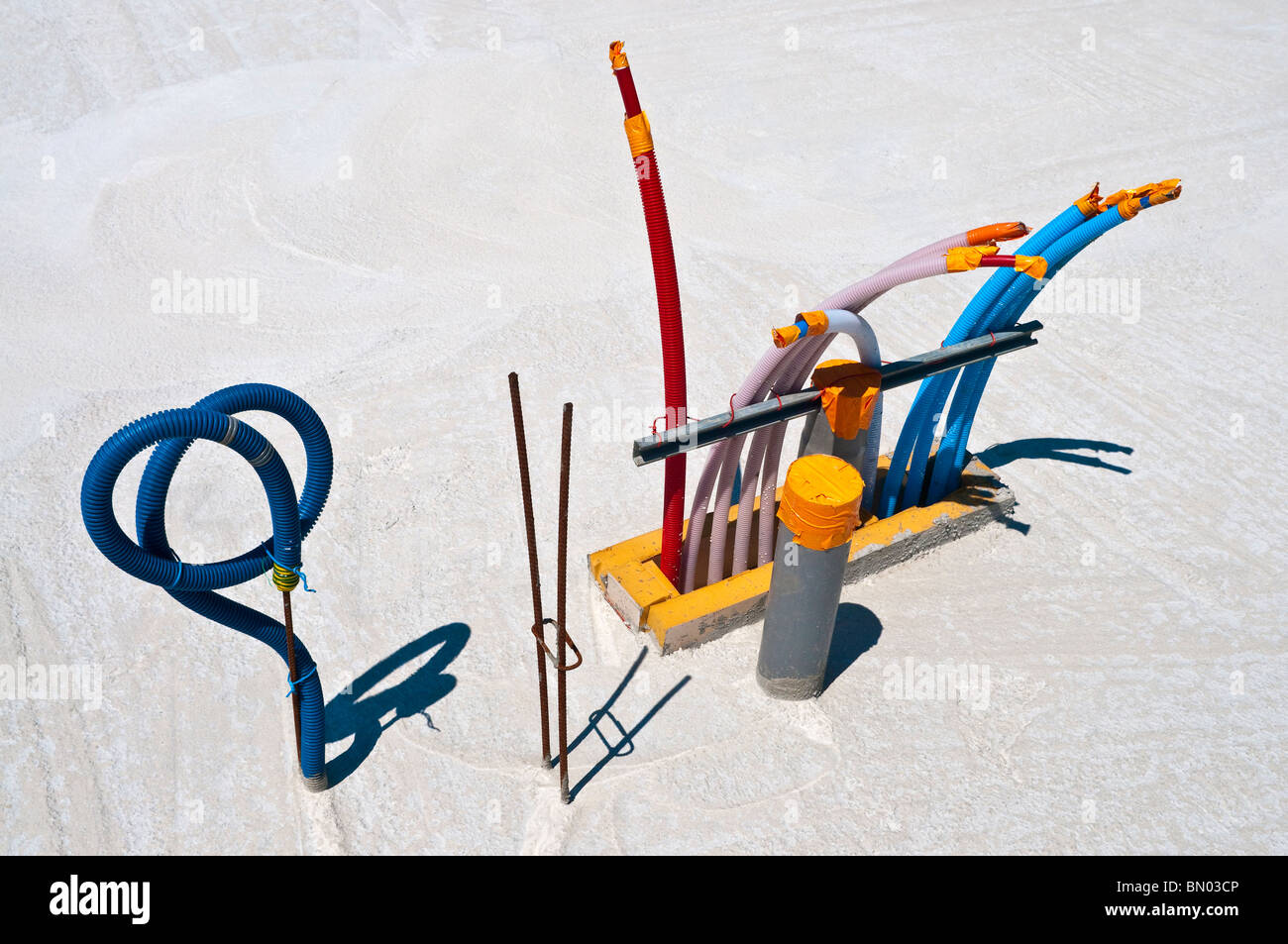 New house concrete foundations with services pipes installed - Indre-et-Loire, France. Stock Photohttps://www.alamy.com/image-license-details/?v=1https://www.alamy.com/stock-photo-new-house-concrete-foundations-with-services-pipes-installed-indre-30120854.html
New house concrete foundations with services pipes installed - Indre-et-Loire, France. Stock Photohttps://www.alamy.com/image-license-details/?v=1https://www.alamy.com/stock-photo-new-house-concrete-foundations-with-services-pipes-installed-indre-30120854.htmlRMBN03CP–New house concrete foundations with services pipes installed - Indre-et-Loire, France.
 Bright colorful, dynamic and shiny solid rods floating in a wavy shape background.. 3d rendered background of Stock Photohttps://www.alamy.com/image-license-details/?v=1https://www.alamy.com/bright-colorful-dynamic-and-shiny-solid-rods-floating-in-a-wavy-shape-background-3d-rendered-background-of-image259826042.html
Bright colorful, dynamic and shiny solid rods floating in a wavy shape background.. 3d rendered background of Stock Photohttps://www.alamy.com/image-license-details/?v=1https://www.alamy.com/bright-colorful-dynamic-and-shiny-solid-rods-floating-in-a-wavy-shape-background-3d-rendered-background-of-image259826042.htmlRFW2M2NE–Bright colorful, dynamic and shiny solid rods floating in a wavy shape background.. 3d rendered background of
 Archive image from page 29 of Deep-ocean biodeterioration of materials (1965). Deep-ocean biodeterioration of materials deepoceanbiodete05mura Year: 1965 Figure 19. Untreated wood bait piece riddled by marine borers. Wood Panels. All the wood specimens were severely damaged by molluscan borers. As shown in Figures 19 and 20, the wood bait pieces which were fitted around the plastic rods and tubes, as well as the plywood panels, were riddled by the borers. These have been identified as Xylophaga washlngtona Bartsch and Xylophaga duplicata Knudsen. The majority of the borers measured about 1/2 Stock Photohttps://www.alamy.com/image-license-details/?v=1https://www.alamy.com/archive-image-from-page-29-of-deep-ocean-biodeterioration-of-materials-1965-deep-ocean-biodeterioration-of-materials-deepoceanbiodete05mura-year-1965-figure-19-untreated-wood-bait-piece-riddled-by-marine-borers-wood-panels-all-the-wood-specimens-were-severely-damaged-by-molluscan-borers-as-shown-in-figures-19-and-20-the-wood-bait-pieces-which-were-fitted-around-the-plastic-rods-and-tubes-as-well-as-the-plywood-panels-were-riddled-by-the-borers-these-have-been-identified-as-xylophaga-washlngtona-bartsch-and-xylophaga-duplicata-knudsen-the-majority-of-the-borers-measured-about-12-image259538931.html
Archive image from page 29 of Deep-ocean biodeterioration of materials (1965). Deep-ocean biodeterioration of materials deepoceanbiodete05mura Year: 1965 Figure 19. Untreated wood bait piece riddled by marine borers. Wood Panels. All the wood specimens were severely damaged by molluscan borers. As shown in Figures 19 and 20, the wood bait pieces which were fitted around the plastic rods and tubes, as well as the plywood panels, were riddled by the borers. These have been identified as Xylophaga washlngtona Bartsch and Xylophaga duplicata Knudsen. The majority of the borers measured about 1/2 Stock Photohttps://www.alamy.com/image-license-details/?v=1https://www.alamy.com/archive-image-from-page-29-of-deep-ocean-biodeterioration-of-materials-1965-deep-ocean-biodeterioration-of-materials-deepoceanbiodete05mura-year-1965-figure-19-untreated-wood-bait-piece-riddled-by-marine-borers-wood-panels-all-the-wood-specimens-were-severely-damaged-by-molluscan-borers-as-shown-in-figures-19-and-20-the-wood-bait-pieces-which-were-fitted-around-the-plastic-rods-and-tubes-as-well-as-the-plywood-panels-were-riddled-by-the-borers-these-have-been-identified-as-xylophaga-washlngtona-bartsch-and-xylophaga-duplicata-knudsen-the-majority-of-the-borers-measured-about-12-image259538931.htmlRMW270FF–Archive image from page 29 of Deep-ocean biodeterioration of materials (1965). Deep-ocean biodeterioration of materials deepoceanbiodete05mura Year: 1965 Figure 19. Untreated wood bait piece riddled by marine borers. Wood Panels. All the wood specimens were severely damaged by molluscan borers. As shown in Figures 19 and 20, the wood bait pieces which were fitted around the plastic rods and tubes, as well as the plywood panels, were riddled by the borers. These have been identified as Xylophaga washlngtona Bartsch and Xylophaga duplicata Knudsen. The majority of the borers measured about 1/2
RMPFFB88–. Deep-ocean biodeterioration of materials. Materials; Marine sediments. Antidesma; plastic rods such as delrin, nylon, phenolic laminate, polycarbonate. Teflon, cellulose acetate, polyethylene, extruded acrylic, cast acrylic, and polysty- rene; vinyl tubes; manlla ropes; phenolic laminated sheet; and high-Impact styrene sheet. 6. Electrical cable insulation composed of silicone rubber was deteriorated by the nibbling and biting action of some marine animals. White polyvinyl chloride insula- tion changed to black when exposed to hydrogen sulfide produced by su I fate-reducing bacteria in the m
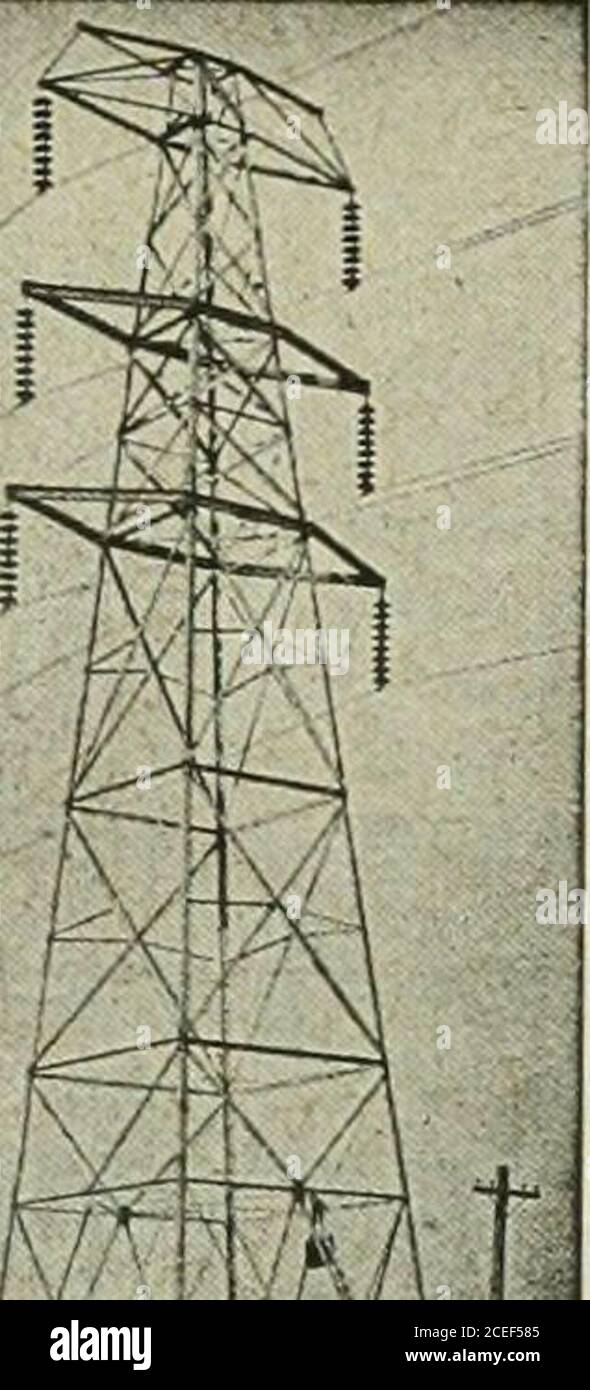 . Electrical news and engineering. The iTi.tleiial of a thousand uses THE ANHYDROUS PHENOL RESIN COMPOUNDS They excel in Heat Resistance—Dielectric Strength—Mechanical Strength—Accuracy of Dimensions furnished in sheets, tubes^ rods, granular, molding plastic, impregnating liquids. Write us for our catalog. Redmanol Chemical Products Co. 676 West 22nd Street, CHICAGO GALVANIZED STEEL TOWERS AND POLES The modern meansof supporting over-head wires.. PowerTelephone and TrolleyLines We shall be pleasedto furnish designsand estimates uponrequest. standard Tower of the HydroElectric Power Commission Stock Photohttps://www.alamy.com/image-license-details/?v=1https://www.alamy.com/electrical-news-and-engineering-the-ititleiial-of-a-thousand-uses-the-anhydrous-phenol-resin-compounds-they-excel-in-heat-resistancedielectric-strengthmechanical-strengthaccuracy-of-dimensions-furnished-in-sheets-tubes-rods-granular-molding-plastic-impregnating-liquids-write-us-for-our-catalog-redmanol-chemical-products-co-676-west-22nd-street-chicago-galvanized-steel-towers-and-poles-the-modern-meansof-supporting-over-head-wires-powertelephone-and-trolleylines-we-shall-be-pleasedto-furnish-designsand-estimates-uponrequest-standard-tower-of-the-hydroelectric-power-commission-image370356341.html
. Electrical news and engineering. The iTi.tleiial of a thousand uses THE ANHYDROUS PHENOL RESIN COMPOUNDS They excel in Heat Resistance—Dielectric Strength—Mechanical Strength—Accuracy of Dimensions furnished in sheets, tubes^ rods, granular, molding plastic, impregnating liquids. Write us for our catalog. Redmanol Chemical Products Co. 676 West 22nd Street, CHICAGO GALVANIZED STEEL TOWERS AND POLES The modern meansof supporting over-head wires.. PowerTelephone and TrolleyLines We shall be pleasedto furnish designsand estimates uponrequest. standard Tower of the HydroElectric Power Commission Stock Photohttps://www.alamy.com/image-license-details/?v=1https://www.alamy.com/electrical-news-and-engineering-the-ititleiial-of-a-thousand-uses-the-anhydrous-phenol-resin-compounds-they-excel-in-heat-resistancedielectric-strengthmechanical-strengthaccuracy-of-dimensions-furnished-in-sheets-tubes-rods-granular-molding-plastic-impregnating-liquids-write-us-for-our-catalog-redmanol-chemical-products-co-676-west-22nd-street-chicago-galvanized-steel-towers-and-poles-the-modern-meansof-supporting-over-head-wires-powertelephone-and-trolleylines-we-shall-be-pleasedto-furnish-designsand-estimates-uponrequest-standard-tower-of-the-hydroelectric-power-commission-image370356341.htmlRM2CEF585–. Electrical news and engineering. The iTi.tleiial of a thousand uses THE ANHYDROUS PHENOL RESIN COMPOUNDS They excel in Heat Resistance—Dielectric Strength—Mechanical Strength—Accuracy of Dimensions furnished in sheets, tubes^ rods, granular, molding plastic, impregnating liquids. Write us for our catalog. Redmanol Chemical Products Co. 676 West 22nd Street, CHICAGO GALVANIZED STEEL TOWERS AND POLES The modern meansof supporting over-head wires.. PowerTelephone and TrolleyLines We shall be pleasedto furnish designsand estimates uponrequest. standard Tower of the HydroElectric Power Commission
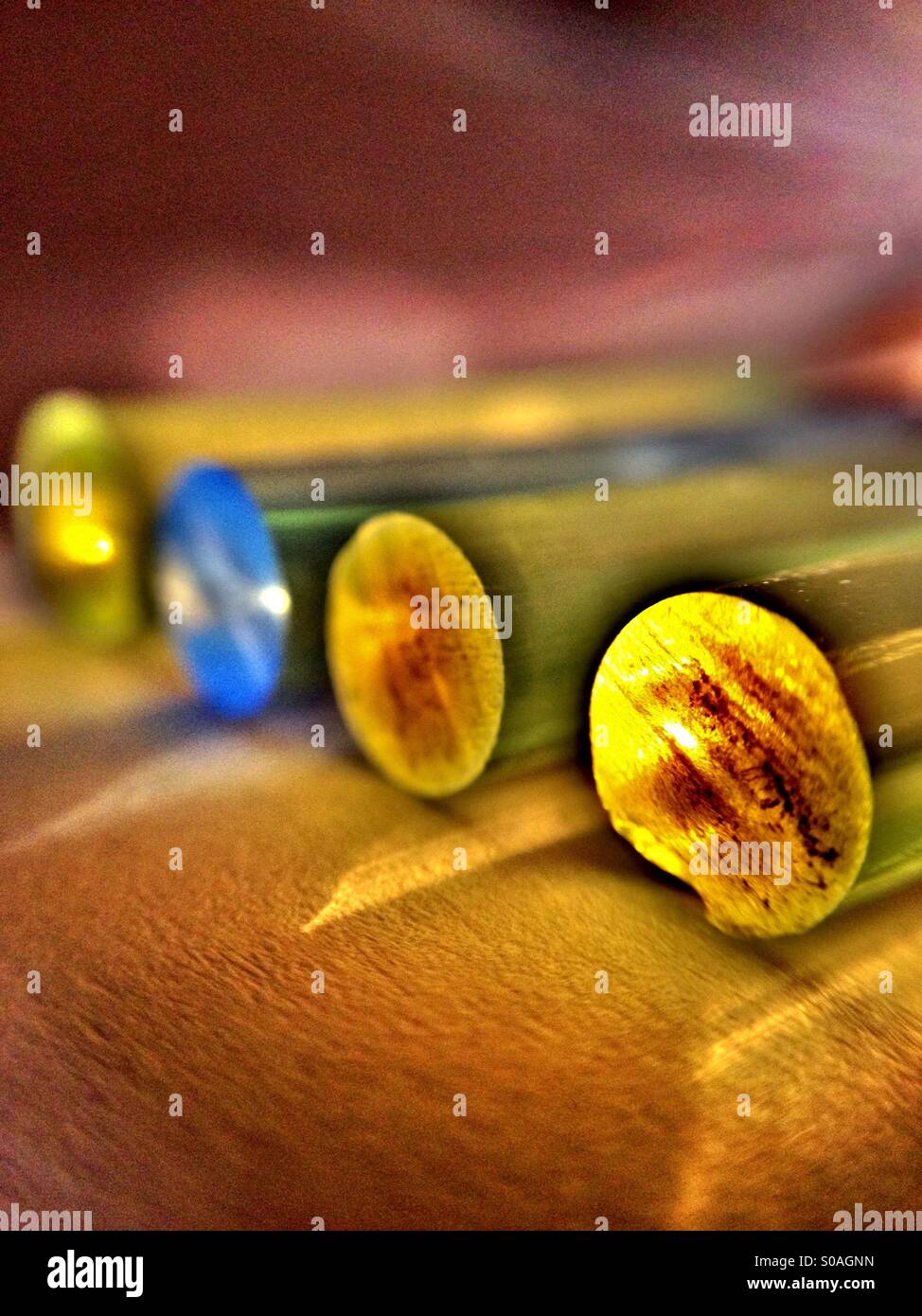 HDR view of coloured acrylic rod Stock Photohttps://www.alamy.com/image-license-details/?v=1https://www.alamy.com/stock-photo-hdr-view-of-coloured-acrylic-rod-310019297.html
HDR view of coloured acrylic rod Stock Photohttps://www.alamy.com/image-license-details/?v=1https://www.alamy.com/stock-photo-hdr-view-of-coloured-acrylic-rod-310019297.htmlRFS0AGNN–HDR view of coloured acrylic rod
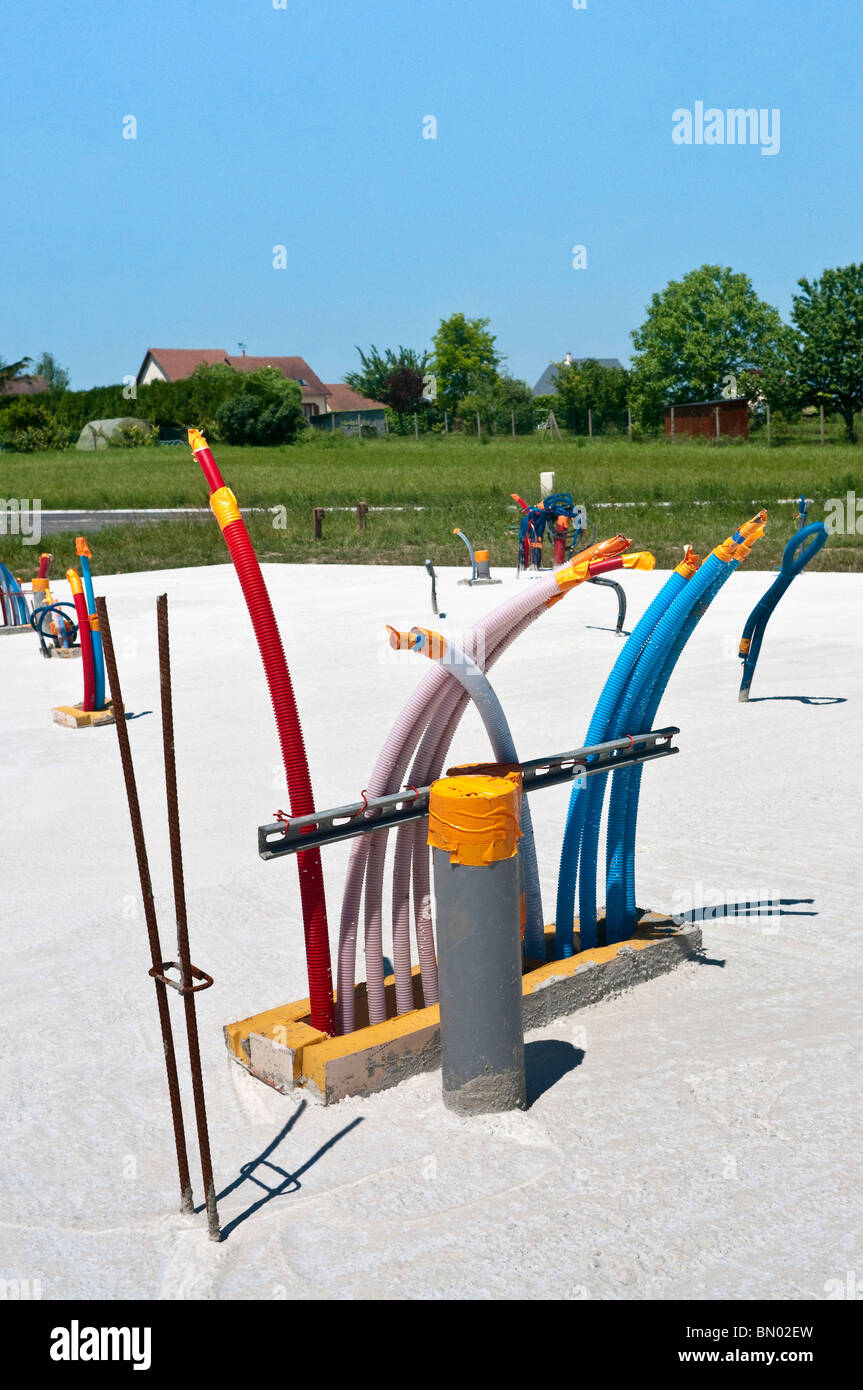 New house concrete foundations with services pipes installed - Indre-et-Loire, France. Stock Photohttps://www.alamy.com/image-license-details/?v=1https://www.alamy.com/stock-photo-new-house-concrete-foundations-with-services-pipes-installed-indre-30120129.html
New house concrete foundations with services pipes installed - Indre-et-Loire, France. Stock Photohttps://www.alamy.com/image-license-details/?v=1https://www.alamy.com/stock-photo-new-house-concrete-foundations-with-services-pipes-installed-indre-30120129.htmlRMBN02EW–New house concrete foundations with services pipes installed - Indre-et-Loire, France.
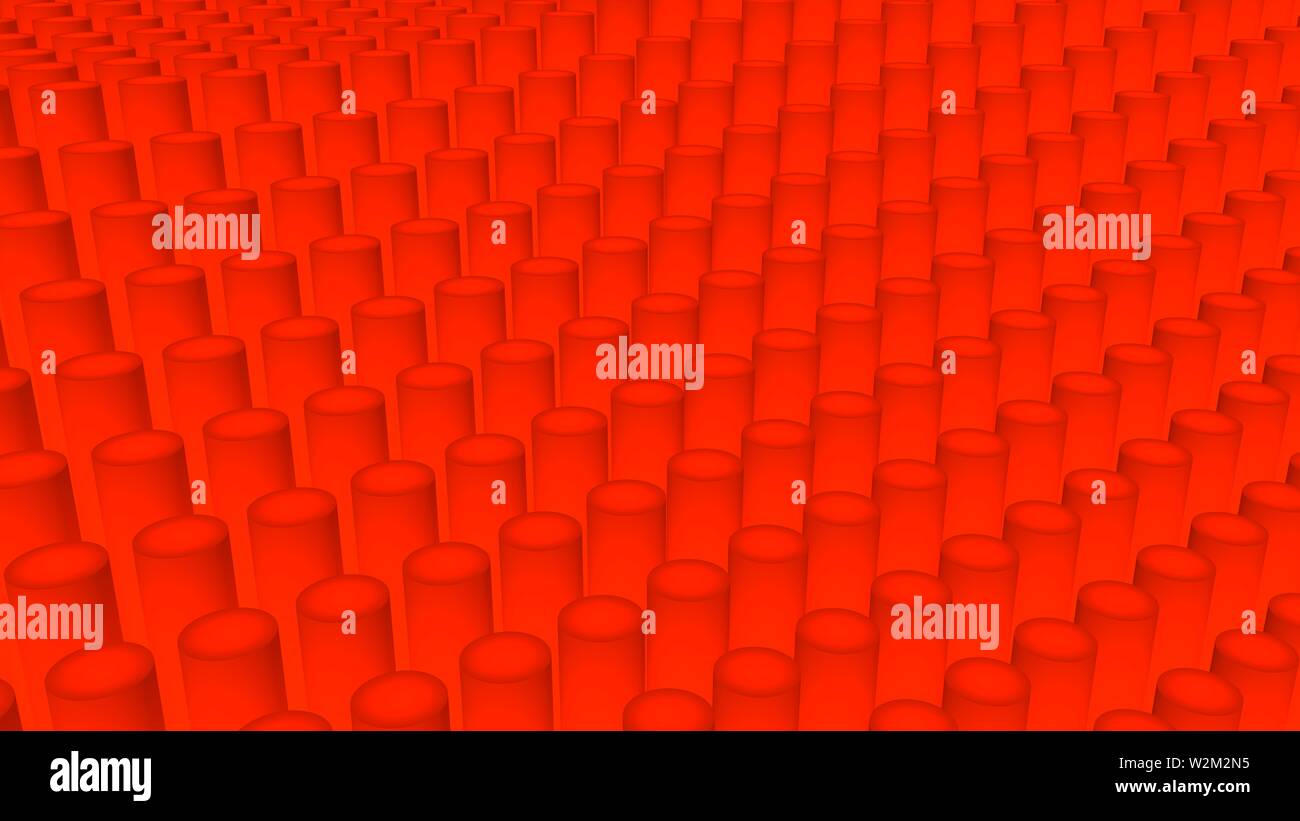 Bright colorful, dynamic and shiny solid rods floating in a wavy shape background.. 3d rendered background of Stock Photohttps://www.alamy.com/image-license-details/?v=1https://www.alamy.com/bright-colorful-dynamic-and-shiny-solid-rods-floating-in-a-wavy-shape-background-3d-rendered-background-of-image259826033.html
Bright colorful, dynamic and shiny solid rods floating in a wavy shape background.. 3d rendered background of Stock Photohttps://www.alamy.com/image-license-details/?v=1https://www.alamy.com/bright-colorful-dynamic-and-shiny-solid-rods-floating-in-a-wavy-shape-background-3d-rendered-background-of-image259826033.htmlRFW2M2N5–Bright colorful, dynamic and shiny solid rods floating in a wavy shape background.. 3d rendered background of
RMW1RBD0–Archive image from page 49 of Deep-ocean biodeterioration of materials (1965). Deep-ocean biodeterioration of materials deepoceanbiodete06mura Year: 1965 Antidesma; plastic rods such as delrin, nylon, phenolic laminate, polycarbonate. Teflon, cellulose acetate, polyethylene, extruded acrylic, cast acrylic, and polysty- rene; vinyl tubes; manlla ropes; phenolic laminated sheet; and high-Impact styrene sheet. 6. Electrical cable insulation composed of silicone rubber was deteriorated by the nibbling and biting action of some marine animals. White polyvinyl chloride insula- tion changed to black
 . Deep-ocean biodeterioration of materials. Materials; Marine sediments. Figure 32. Rubber and plasHc electrical tape wrappings over plastic rods and tubes. The plastic electrical tape wrappings were neither damaged by the effects of the deep sea environment nor by any biological activity, although there was some hydroid growth over them. When the tape was removed from several plastic rods, it still had good adhesive quality and was In good condition. When the rubber and plastic tape wrappings containing small wood pieces (Figure 33) were cut and the enclosed wood removed and examined, the woo Stock Photohttps://www.alamy.com/image-license-details/?v=1https://www.alamy.com/deep-ocean-biodeterioration-of-materials-materials-marine-sediments-figure-32-rubber-and-plashc-electrical-tape-wrappings-over-plastic-rods-and-tubes-the-plastic-electrical-tape-wrappings-were-neither-damaged-by-the-effects-of-the-deep-sea-environment-nor-by-any-biological-activity-although-there-was-some-hydroid-growth-over-them-when-the-tape-was-removed-from-several-plastic-rods-it-still-had-good-adhesive-quality-and-was-in-good-condition-when-the-rubber-and-plastic-tape-wrappings-containing-small-wood-pieces-figure-33-were-cut-and-the-enclosed-wood-removed-and-examined-the-woo-image216082524.html
. Deep-ocean biodeterioration of materials. Materials; Marine sediments. Figure 32. Rubber and plasHc electrical tape wrappings over plastic rods and tubes. The plastic electrical tape wrappings were neither damaged by the effects of the deep sea environment nor by any biological activity, although there was some hydroid growth over them. When the tape was removed from several plastic rods, it still had good adhesive quality and was In good condition. When the rubber and plastic tape wrappings containing small wood pieces (Figure 33) were cut and the enclosed wood removed and examined, the woo Stock Photohttps://www.alamy.com/image-license-details/?v=1https://www.alamy.com/deep-ocean-biodeterioration-of-materials-materials-marine-sediments-figure-32-rubber-and-plashc-electrical-tape-wrappings-over-plastic-rods-and-tubes-the-plastic-electrical-tape-wrappings-were-neither-damaged-by-the-effects-of-the-deep-sea-environment-nor-by-any-biological-activity-although-there-was-some-hydroid-growth-over-them-when-the-tape-was-removed-from-several-plastic-rods-it-still-had-good-adhesive-quality-and-was-in-good-condition-when-the-rubber-and-plastic-tape-wrappings-containing-small-wood-pieces-figure-33-were-cut-and-the-enclosed-wood-removed-and-examined-the-woo-image216082524.htmlRMPFFBD0–. Deep-ocean biodeterioration of materials. Materials; Marine sediments. Figure 32. Rubber and plasHc electrical tape wrappings over plastic rods and tubes. The plastic electrical tape wrappings were neither damaged by the effects of the deep sea environment nor by any biological activity, although there was some hydroid growth over them. When the tape was removed from several plastic rods, it still had good adhesive quality and was In good condition. When the rubber and plastic tape wrappings containing small wood pieces (Figure 33) were cut and the enclosed wood removed and examined, the woo
 . Railway mechanical engineer . -out danger of the escaping steam. Only one style and size of stuffing box is required since variations in rod diameter tan be accounted for by varyingthe front and back end throat ring bores. G-B plasticpacking is composed of small tubes which are forced into ahomogeneous mass around the throttle rod by the plunger.Scored and worn throttle rods which are difficult to keepsteam-tight on account of set packing not adapting itselfto irregularities, are said to cause practically no trouble withthe use of G-B plastic packing—which conforms to theshape of the rod whe Stock Photohttps://www.alamy.com/image-license-details/?v=1https://www.alamy.com/railway-mechanical-engineer-out-danger-of-the-escaping-steam-only-one-style-and-size-of-stuffing-box-is-required-since-variations-in-rod-diameter-tan-be-accounted-for-by-varyingthe-front-and-back-end-throat-ring-bores-g-b-plasticpacking-is-composed-of-small-tubes-which-are-forced-into-ahomogeneous-mass-around-the-throttle-rod-by-the-plungerscored-and-worn-throttle-rods-which-are-difficult-to-keepsteam-tight-on-account-of-set-packing-not-adapting-itselfto-irregularities-are-said-to-cause-practically-no-trouble-withthe-use-of-g-b-plastic-packingwhich-conforms-to-theshape-of-the-rod-whe-image371820610.html
. Railway mechanical engineer . -out danger of the escaping steam. Only one style and size of stuffing box is required since variations in rod diameter tan be accounted for by varyingthe front and back end throat ring bores. G-B plasticpacking is composed of small tubes which are forced into ahomogeneous mass around the throttle rod by the plunger.Scored and worn throttle rods which are difficult to keepsteam-tight on account of set packing not adapting itselfto irregularities, are said to cause practically no trouble withthe use of G-B plastic packing—which conforms to theshape of the rod whe Stock Photohttps://www.alamy.com/image-license-details/?v=1https://www.alamy.com/railway-mechanical-engineer-out-danger-of-the-escaping-steam-only-one-style-and-size-of-stuffing-box-is-required-since-variations-in-rod-diameter-tan-be-accounted-for-by-varyingthe-front-and-back-end-throat-ring-bores-g-b-plasticpacking-is-composed-of-small-tubes-which-are-forced-into-ahomogeneous-mass-around-the-throttle-rod-by-the-plungerscored-and-worn-throttle-rods-which-are-difficult-to-keepsteam-tight-on-account-of-set-packing-not-adapting-itselfto-irregularities-are-said-to-cause-practically-no-trouble-withthe-use-of-g-b-plastic-packingwhich-conforms-to-theshape-of-the-rod-whe-image371820610.htmlRM2CGWTYE–. Railway mechanical engineer . -out danger of the escaping steam. Only one style and size of stuffing box is required since variations in rod diameter tan be accounted for by varyingthe front and back end throat ring bores. G-B plasticpacking is composed of small tubes which are forced into ahomogeneous mass around the throttle rod by the plunger.Scored and worn throttle rods which are difficult to keepsteam-tight on account of set packing not adapting itselfto irregularities, are said to cause practically no trouble withthe use of G-B plastic packing—which conforms to theshape of the rod whe
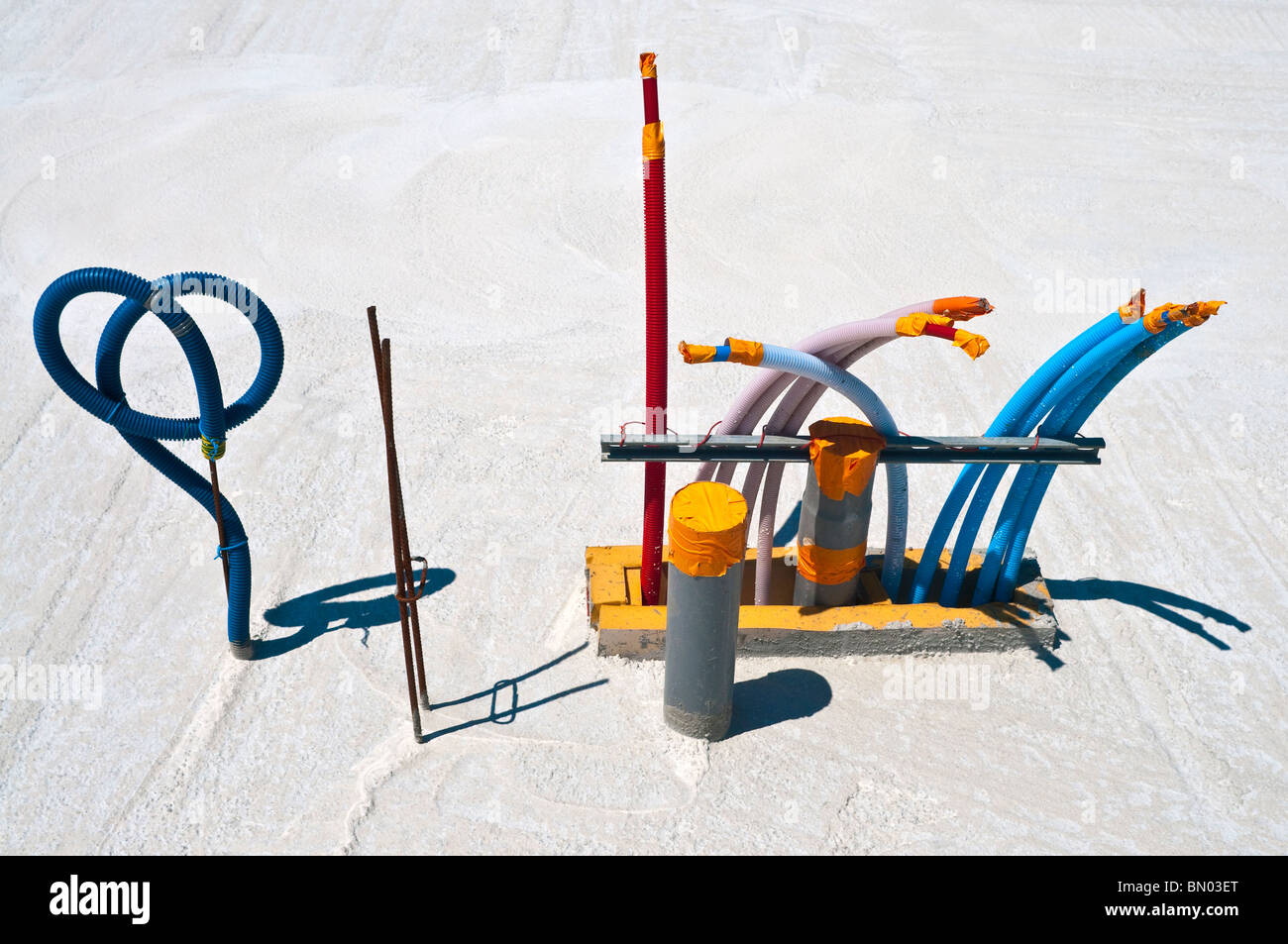 New house concrete foundations with services pipes installed - Indre-et-Loire, France. Stock Photohttps://www.alamy.com/image-license-details/?v=1https://www.alamy.com/stock-photo-new-house-concrete-foundations-with-services-pipes-installed-indre-30120912.html
New house concrete foundations with services pipes installed - Indre-et-Loire, France. Stock Photohttps://www.alamy.com/image-license-details/?v=1https://www.alamy.com/stock-photo-new-house-concrete-foundations-with-services-pipes-installed-indre-30120912.htmlRMBN03ET–New house concrete foundations with services pipes installed - Indre-et-Loire, France.
 Bright colorful, dynamic and shiny solid rods floating in a wavy shape background.. 3d rendered background of Stock Photohttps://www.alamy.com/image-license-details/?v=1https://www.alamy.com/bright-colorful-dynamic-and-shiny-solid-rods-floating-in-a-wavy-shape-background-3d-rendered-background-of-image259826035.html
Bright colorful, dynamic and shiny solid rods floating in a wavy shape background.. 3d rendered background of Stock Photohttps://www.alamy.com/image-license-details/?v=1https://www.alamy.com/bright-colorful-dynamic-and-shiny-solid-rods-floating-in-a-wavy-shape-background-3d-rendered-background-of-image259826035.htmlRFW2M2N7–Bright colorful, dynamic and shiny solid rods floating in a wavy shape background.. 3d rendered background of
 . Deep-ocean biodeterioration of materials. Materials; Marine sediments. â «^^ Figure 23. Plastic electrical insulation tape wrapped around plastic rods. The burlap wrappings (Figure 24) on all the plastic rods and tubes were deteriorated by bacterial action, and the material could easily be torn apart by hand. The rubber electrical tape wrappings were not affected by fouling organisms although there were hydroids and sponges growing on the rubber material. Slight cracks (Figure 25) were found on the rubber and were probably produced by the effects of the deep-sea environment. 0.015-Inch Insu Stock Photohttps://www.alamy.com/image-license-details/?v=1https://www.alamy.com/deep-ocean-biodeterioration-of-materials-materials-marine-sediments-figure-23-plastic-electrical-insulation-tape-wrapped-around-plastic-rods-the-burlap-wrappings-figure-24-on-all-the-plastic-rods-and-tubes-were-deteriorated-by-bacterial-action-and-the-material-could-easily-be-torn-apart-by-hand-the-rubber-electrical-tape-wrappings-were-not-affected-by-fouling-organisms-although-there-were-hydroids-and-sponges-growing-on-the-rubber-material-slight-cracks-figure-25-were-found-on-the-rubber-and-were-probably-produced-by-the-effects-of-the-deep-sea-environment-0015-inch-insu-image216082745.html
. Deep-ocean biodeterioration of materials. Materials; Marine sediments. â «^^ Figure 23. Plastic electrical insulation tape wrapped around plastic rods. The burlap wrappings (Figure 24) on all the plastic rods and tubes were deteriorated by bacterial action, and the material could easily be torn apart by hand. The rubber electrical tape wrappings were not affected by fouling organisms although there were hydroids and sponges growing on the rubber material. Slight cracks (Figure 25) were found on the rubber and were probably produced by the effects of the deep-sea environment. 0.015-Inch Insu Stock Photohttps://www.alamy.com/image-license-details/?v=1https://www.alamy.com/deep-ocean-biodeterioration-of-materials-materials-marine-sediments-figure-23-plastic-electrical-insulation-tape-wrapped-around-plastic-rods-the-burlap-wrappings-figure-24-on-all-the-plastic-rods-and-tubes-were-deteriorated-by-bacterial-action-and-the-material-could-easily-be-torn-apart-by-hand-the-rubber-electrical-tape-wrappings-were-not-affected-by-fouling-organisms-although-there-were-hydroids-and-sponges-growing-on-the-rubber-material-slight-cracks-figure-25-were-found-on-the-rubber-and-were-probably-produced-by-the-effects-of-the-deep-sea-environment-0015-inch-insu-image216082745.htmlRMPFFBMW–. Deep-ocean biodeterioration of materials. Materials; Marine sediments. â «^^ Figure 23. Plastic electrical insulation tape wrapped around plastic rods. The burlap wrappings (Figure 24) on all the plastic rods and tubes were deteriorated by bacterial action, and the material could easily be torn apart by hand. The rubber electrical tape wrappings were not affected by fouling organisms although there were hydroids and sponges growing on the rubber material. Slight cracks (Figure 25) were found on the rubber and were probably produced by the effects of the deep-sea environment. 0.015-Inch Insu
 . Deep-ocean biodeterioration of materials. Materials; Marine sediments. â «^^ Figure 23. Plastic electrical insulation tape wrapped around plastic rods. The burlap wrappings (Figure 24) on all the plastic rods and tubes were deteriorated by bacterial action, and the material could easily be torn apart by hand. The rubber electrical tape wrappings were not affected by fouling organisms although there were hydroids and sponges growing on the rubber material. Slight cracks (Figure 25) were found on the rubber and were probably produced by the effects of the deep-sea environment. 0.015-Inch Insu Stock Photohttps://www.alamy.com/image-license-details/?v=1https://www.alamy.com/deep-ocean-biodeterioration-of-materials-materials-marine-sediments-figure-23-plastic-electrical-insulation-tape-wrapped-around-plastic-rods-the-burlap-wrappings-figure-24-on-all-the-plastic-rods-and-tubes-were-deteriorated-by-bacterial-action-and-the-material-could-easily-be-torn-apart-by-hand-the-rubber-electrical-tape-wrappings-were-not-affected-by-fouling-organisms-although-there-were-hydroids-and-sponges-growing-on-the-rubber-material-slight-cracks-figure-25-were-found-on-the-rubber-and-were-probably-produced-by-the-effects-of-the-deep-sea-environment-0015-inch-insu-image231804032.html
. Deep-ocean biodeterioration of materials. Materials; Marine sediments. â «^^ Figure 23. Plastic electrical insulation tape wrapped around plastic rods. The burlap wrappings (Figure 24) on all the plastic rods and tubes were deteriorated by bacterial action, and the material could easily be torn apart by hand. The rubber electrical tape wrappings were not affected by fouling organisms although there were hydroids and sponges growing on the rubber material. Slight cracks (Figure 25) were found on the rubber and were probably produced by the effects of the deep-sea environment. 0.015-Inch Insu Stock Photohttps://www.alamy.com/image-license-details/?v=1https://www.alamy.com/deep-ocean-biodeterioration-of-materials-materials-marine-sediments-figure-23-plastic-electrical-insulation-tape-wrapped-around-plastic-rods-the-burlap-wrappings-figure-24-on-all-the-plastic-rods-and-tubes-were-deteriorated-by-bacterial-action-and-the-material-could-easily-be-torn-apart-by-hand-the-rubber-electrical-tape-wrappings-were-not-affected-by-fouling-organisms-although-there-were-hydroids-and-sponges-growing-on-the-rubber-material-slight-cracks-figure-25-were-found-on-the-rubber-and-were-probably-produced-by-the-effects-of-the-deep-sea-environment-0015-inch-insu-image231804032.htmlRMRD3GBC–. Deep-ocean biodeterioration of materials. Materials; Marine sediments. â «^^ Figure 23. Plastic electrical insulation tape wrapped around plastic rods. The burlap wrappings (Figure 24) on all the plastic rods and tubes were deteriorated by bacterial action, and the material could easily be torn apart by hand. The rubber electrical tape wrappings were not affected by fouling organisms although there were hydroids and sponges growing on the rubber material. Slight cracks (Figure 25) were found on the rubber and were probably produced by the effects of the deep-sea environment. 0.015-Inch Insu
 Bright colorful, dynamic and shiny solid rods floating in a wavy shape background.. 3d rendered background of Stock Photohttps://www.alamy.com/image-license-details/?v=1https://www.alamy.com/bright-colorful-dynamic-and-shiny-solid-rods-floating-in-a-wavy-shape-background-3d-rendered-background-of-image259826034.html
Bright colorful, dynamic and shiny solid rods floating in a wavy shape background.. 3d rendered background of Stock Photohttps://www.alamy.com/image-license-details/?v=1https://www.alamy.com/bright-colorful-dynamic-and-shiny-solid-rods-floating-in-a-wavy-shape-background-3d-rendered-background-of-image259826034.htmlRFW2M2N6–Bright colorful, dynamic and shiny solid rods floating in a wavy shape background.. 3d rendered background of
 . Deep-ocean biodeterioration of materials. Materials; Marine sediments. Figure 19. Untreated wood bait piece riddled by marine borers. Wood Panels. All the wood specimens were severely damaged by molluscan borers. As shown in Figures 19 and 20, the wood bait pieces which were fitted around the plastic rods and tubes, as well as the plywood panels, were riddled by the borers. These have been identified as Xylophaga washlngtona Bartsch and Xylophaga duplicata Knudsen. The majority of the borers measured about 1/2 inch in diameter (Figure 21). Some of the damaged wood specimens could easily be b Stock Photohttps://www.alamy.com/image-license-details/?v=1https://www.alamy.com/deep-ocean-biodeterioration-of-materials-materials-marine-sediments-figure-19-untreated-wood-bait-piece-riddled-by-marine-borers-wood-panels-all-the-wood-specimens-were-severely-damaged-by-molluscan-borers-as-shown-in-figures-19-and-20-the-wood-bait-pieces-which-were-fitted-around-the-plastic-rods-and-tubes-as-well-as-the-plywood-panels-were-riddled-by-the-borers-these-have-been-identified-as-xylophaga-washlngtona-bartsch-and-xylophaga-duplicata-knudsen-the-majority-of-the-borers-measured-about-12-inch-in-diameter-figure-21-some-of-the-damaged-wood-specimens-could-easily-be-b-image216082625.html
. Deep-ocean biodeterioration of materials. Materials; Marine sediments. Figure 19. Untreated wood bait piece riddled by marine borers. Wood Panels. All the wood specimens were severely damaged by molluscan borers. As shown in Figures 19 and 20, the wood bait pieces which were fitted around the plastic rods and tubes, as well as the plywood panels, were riddled by the borers. These have been identified as Xylophaga washlngtona Bartsch and Xylophaga duplicata Knudsen. The majority of the borers measured about 1/2 inch in diameter (Figure 21). Some of the damaged wood specimens could easily be b Stock Photohttps://www.alamy.com/image-license-details/?v=1https://www.alamy.com/deep-ocean-biodeterioration-of-materials-materials-marine-sediments-figure-19-untreated-wood-bait-piece-riddled-by-marine-borers-wood-panels-all-the-wood-specimens-were-severely-damaged-by-molluscan-borers-as-shown-in-figures-19-and-20-the-wood-bait-pieces-which-were-fitted-around-the-plastic-rods-and-tubes-as-well-as-the-plywood-panels-were-riddled-by-the-borers-these-have-been-identified-as-xylophaga-washlngtona-bartsch-and-xylophaga-duplicata-knudsen-the-majority-of-the-borers-measured-about-12-inch-in-diameter-figure-21-some-of-the-damaged-wood-specimens-could-easily-be-b-image216082625.htmlRMPFFBGH–. Deep-ocean biodeterioration of materials. Materials; Marine sediments. Figure 19. Untreated wood bait piece riddled by marine borers. Wood Panels. All the wood specimens were severely damaged by molluscan borers. As shown in Figures 19 and 20, the wood bait pieces which were fitted around the plastic rods and tubes, as well as the plywood panels, were riddled by the borers. These have been identified as Xylophaga washlngtona Bartsch and Xylophaga duplicata Knudsen. The majority of the borers measured about 1/2 inch in diameter (Figure 21). Some of the damaged wood specimens could easily be b
 . Deep-ocean biodeterioration of materials. Materials; Marine sediments. The wooden panels, riddled with marine borers, were soaked in an alcohol solution to prevent decay and were placed in plastic bags. The wooden panels used for fungi determination were placed directly into sterile plastic bags, sealed, and stored in the ship's refrigerator. Rope specimens for the isolation of marine micro- organisms were also placed in sterile plastic bags and stored In a refrigerator. In order to determine moisture absorption, the 3-foot-long plastic rods and tubes and other plastic materials were placed Stock Photohttps://www.alamy.com/image-license-details/?v=1https://www.alamy.com/deep-ocean-biodeterioration-of-materials-materials-marine-sediments-the-wooden-panels-riddled-with-marine-borers-were-soaked-in-an-alcohol-solution-to-prevent-decay-and-were-placed-in-plastic-bags-the-wooden-panels-used-for-fungi-determination-were-placed-directly-into-sterile-plastic-bags-sealed-and-stored-in-the-ships-refrigerator-rope-specimens-for-the-isolation-of-marine-micro-organisms-were-also-placed-in-sterile-plastic-bags-and-stored-in-a-refrigerator-in-order-to-determine-moisture-absorption-the-3-foot-long-plastic-rods-and-tubes-and-other-plastic-materials-were-placed-image231804082.html
. Deep-ocean biodeterioration of materials. Materials; Marine sediments. The wooden panels, riddled with marine borers, were soaked in an alcohol solution to prevent decay and were placed in plastic bags. The wooden panels used for fungi determination were placed directly into sterile plastic bags, sealed, and stored in the ship's refrigerator. Rope specimens for the isolation of marine micro- organisms were also placed in sterile plastic bags and stored In a refrigerator. In order to determine moisture absorption, the 3-foot-long plastic rods and tubes and other plastic materials were placed Stock Photohttps://www.alamy.com/image-license-details/?v=1https://www.alamy.com/deep-ocean-biodeterioration-of-materials-materials-marine-sediments-the-wooden-panels-riddled-with-marine-borers-were-soaked-in-an-alcohol-solution-to-prevent-decay-and-were-placed-in-plastic-bags-the-wooden-panels-used-for-fungi-determination-were-placed-directly-into-sterile-plastic-bags-sealed-and-stored-in-the-ships-refrigerator-rope-specimens-for-the-isolation-of-marine-micro-organisms-were-also-placed-in-sterile-plastic-bags-and-stored-in-a-refrigerator-in-order-to-determine-moisture-absorption-the-3-foot-long-plastic-rods-and-tubes-and-other-plastic-materials-were-placed-image231804082.htmlRMRD3GD6–. Deep-ocean biodeterioration of materials. Materials; Marine sediments. The wooden panels, riddled with marine borers, were soaked in an alcohol solution to prevent decay and were placed in plastic bags. The wooden panels used for fungi determination were placed directly into sterile plastic bags, sealed, and stored in the ship's refrigerator. Rope specimens for the isolation of marine micro- organisms were also placed in sterile plastic bags and stored In a refrigerator. In order to determine moisture absorption, the 3-foot-long plastic rods and tubes and other plastic materials were placed
 Bright colorful, dynamic and shiny solid rods floating in a wavy shape background.. 3d rendered background of Stock Photohttps://www.alamy.com/image-license-details/?v=1https://www.alamy.com/bright-colorful-dynamic-and-shiny-solid-rods-floating-in-a-wavy-shape-background-3d-rendered-background-of-image259826024.html
Bright colorful, dynamic and shiny solid rods floating in a wavy shape background.. 3d rendered background of Stock Photohttps://www.alamy.com/image-license-details/?v=1https://www.alamy.com/bright-colorful-dynamic-and-shiny-solid-rods-floating-in-a-wavy-shape-background-3d-rendered-background-of-image259826024.htmlRFW2M2MT–Bright colorful, dynamic and shiny solid rods floating in a wavy shape background.. 3d rendered background of
 . Deep-ocean biodeterioration of materials. Materials; Marine sediments. The wooden panels, riddled with marine borers, were soaked in an alcohol solution to prevent decay and were placed in plastic bags. The wooden panels used for fungi determination were placed directly into sterile plastic bags, sealed, and stored in the ship's refrigerator. Rope specimens for the isolation of marine micro- organisms were also placed in sterile plastic bags and stored In a refrigerator. In order to determine moisture absorption, the 3-foot-long plastic rods and tubes and other plastic materials were placed Stock Photohttps://www.alamy.com/image-license-details/?v=1https://www.alamy.com/deep-ocean-biodeterioration-of-materials-materials-marine-sediments-the-wooden-panels-riddled-with-marine-borers-were-soaked-in-an-alcohol-solution-to-prevent-decay-and-were-placed-in-plastic-bags-the-wooden-panels-used-for-fungi-determination-were-placed-directly-into-sterile-plastic-bags-sealed-and-stored-in-the-ships-refrigerator-rope-specimens-for-the-isolation-of-marine-micro-organisms-were-also-placed-in-sterile-plastic-bags-and-stored-in-a-refrigerator-in-order-to-determine-moisture-absorption-the-3-foot-long-plastic-rods-and-tubes-and-other-plastic-materials-were-placed-image216082857.html
. Deep-ocean biodeterioration of materials. Materials; Marine sediments. The wooden panels, riddled with marine borers, were soaked in an alcohol solution to prevent decay and were placed in plastic bags. The wooden panels used for fungi determination were placed directly into sterile plastic bags, sealed, and stored in the ship's refrigerator. Rope specimens for the isolation of marine micro- organisms were also placed in sterile plastic bags and stored In a refrigerator. In order to determine moisture absorption, the 3-foot-long plastic rods and tubes and other plastic materials were placed Stock Photohttps://www.alamy.com/image-license-details/?v=1https://www.alamy.com/deep-ocean-biodeterioration-of-materials-materials-marine-sediments-the-wooden-panels-riddled-with-marine-borers-were-soaked-in-an-alcohol-solution-to-prevent-decay-and-were-placed-in-plastic-bags-the-wooden-panels-used-for-fungi-determination-were-placed-directly-into-sterile-plastic-bags-sealed-and-stored-in-the-ships-refrigerator-rope-specimens-for-the-isolation-of-marine-micro-organisms-were-also-placed-in-sterile-plastic-bags-and-stored-in-a-refrigerator-in-order-to-determine-moisture-absorption-the-3-foot-long-plastic-rods-and-tubes-and-other-plastic-materials-were-placed-image216082857.htmlRMPFFBTW–. Deep-ocean biodeterioration of materials. Materials; Marine sediments. The wooden panels, riddled with marine borers, were soaked in an alcohol solution to prevent decay and were placed in plastic bags. The wooden panels used for fungi determination were placed directly into sterile plastic bags, sealed, and stored in the ship's refrigerator. Rope specimens for the isolation of marine micro- organisms were also placed in sterile plastic bags and stored In a refrigerator. In order to determine moisture absorption, the 3-foot-long plastic rods and tubes and other plastic materials were placed
 . Deep-ocean biodeterioration of materials. Materials; Marine sediments. Figure 19. Untreated wood bait piece riddled by marine borers. Wood Panels. All the wood specimens were severely damaged by molluscan borers. As shown in Figures 19 and 20, the wood bait pieces which were fitted around the plastic rods and tubes, as well as the plywood panels, were riddled by the borers. These have been identified as Xylophaga washlngtona Bartsch and Xylophaga duplicata Knudsen. The majority of the borers measured about 1/2 inch in diameter (Figure 21). Some of the damaged wood specimens could easily be b Stock Photohttps://www.alamy.com/image-license-details/?v=1https://www.alamy.com/deep-ocean-biodeterioration-of-materials-materials-marine-sediments-figure-19-untreated-wood-bait-piece-riddled-by-marine-borers-wood-panels-all-the-wood-specimens-were-severely-damaged-by-molluscan-borers-as-shown-in-figures-19-and-20-the-wood-bait-pieces-which-were-fitted-around-the-plastic-rods-and-tubes-as-well-as-the-plywood-panels-were-riddled-by-the-borers-these-have-been-identified-as-xylophaga-washlngtona-bartsch-and-xylophaga-duplicata-knudsen-the-majority-of-the-borers-measured-about-12-inch-in-diameter-figure-21-some-of-the-damaged-wood-specimens-could-easily-be-b-image231803982.html
. Deep-ocean biodeterioration of materials. Materials; Marine sediments. Figure 19. Untreated wood bait piece riddled by marine borers. Wood Panels. All the wood specimens were severely damaged by molluscan borers. As shown in Figures 19 and 20, the wood bait pieces which were fitted around the plastic rods and tubes, as well as the plywood panels, were riddled by the borers. These have been identified as Xylophaga washlngtona Bartsch and Xylophaga duplicata Knudsen. The majority of the borers measured about 1/2 inch in diameter (Figure 21). Some of the damaged wood specimens could easily be b Stock Photohttps://www.alamy.com/image-license-details/?v=1https://www.alamy.com/deep-ocean-biodeterioration-of-materials-materials-marine-sediments-figure-19-untreated-wood-bait-piece-riddled-by-marine-borers-wood-panels-all-the-wood-specimens-were-severely-damaged-by-molluscan-borers-as-shown-in-figures-19-and-20-the-wood-bait-pieces-which-were-fitted-around-the-plastic-rods-and-tubes-as-well-as-the-plywood-panels-were-riddled-by-the-borers-these-have-been-identified-as-xylophaga-washlngtona-bartsch-and-xylophaga-duplicata-knudsen-the-majority-of-the-borers-measured-about-12-inch-in-diameter-figure-21-some-of-the-damaged-wood-specimens-could-easily-be-b-image231803982.htmlRMRD3G9J–. Deep-ocean biodeterioration of materials. Materials; Marine sediments. Figure 19. Untreated wood bait piece riddled by marine borers. Wood Panels. All the wood specimens were severely damaged by molluscan borers. As shown in Figures 19 and 20, the wood bait pieces which were fitted around the plastic rods and tubes, as well as the plywood panels, were riddled by the borers. These have been identified as Xylophaga washlngtona Bartsch and Xylophaga duplicata Knudsen. The majority of the borers measured about 1/2 inch in diameter (Figure 21). Some of the damaged wood specimens could easily be b
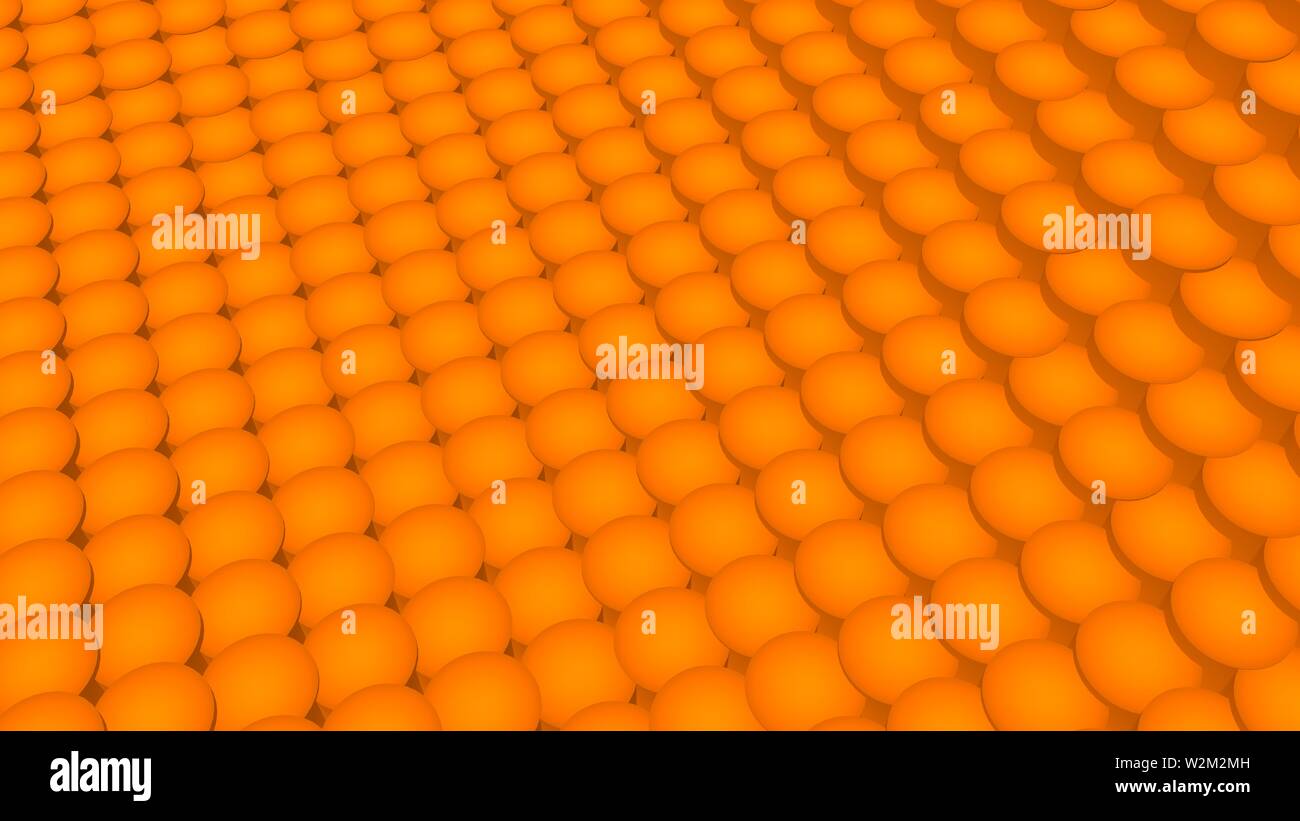 Bright colorful, dynamic and shiny solid rods floating in a wavy shape background.. 3d rendered background of Stock Photohttps://www.alamy.com/image-license-details/?v=1https://www.alamy.com/bright-colorful-dynamic-and-shiny-solid-rods-floating-in-a-wavy-shape-background-3d-rendered-background-of-image259826017.html
Bright colorful, dynamic and shiny solid rods floating in a wavy shape background.. 3d rendered background of Stock Photohttps://www.alamy.com/image-license-details/?v=1https://www.alamy.com/bright-colorful-dynamic-and-shiny-solid-rods-floating-in-a-wavy-shape-background-3d-rendered-background-of-image259826017.htmlRFW2M2MH–Bright colorful, dynamic and shiny solid rods floating in a wavy shape background.. 3d rendered background of
 . Deep-ocean biodeterioration of materials. Materials; Marine sediments. Figure 20. Nylon and polypropylene rope specimens, in excellent condition. 1 wmtfSKM Figure 21. Plastic rods and tubes immediately after recovery. Borers are visible in bait piece. 28. Please note that these images are extracted from scanned page images that may have been digitally enhanced for readability - coloration and appearance of these illustrations may not perfectly resemble the original work.. Muraoka, James S; Naval Civil Engineering Laboratory (Port Hueneme, Calif. ). Port Hueneme, Calif. : U. S. Naval Civil En Stock Photohttps://www.alamy.com/image-license-details/?v=1https://www.alamy.com/deep-ocean-biodeterioration-of-materials-materials-marine-sediments-figure-20-nylon-and-polypropylene-rope-specimens-in-excellent-condition-1-wmtfskm-figure-21-plastic-rods-and-tubes-immediately-after-recovery-borers-are-visible-in-bait-piece-28-please-note-that-these-images-are-extracted-from-scanned-page-images-that-may-have-been-digitally-enhanced-for-readability-coloration-and-appearance-of-these-illustrations-may-not-perfectly-resemble-the-original-work-muraoka-james-s-naval-civil-engineering-laboratory-port-hueneme-calif-port-hueneme-calif-u-s-naval-civil-en-image216082764.html
. Deep-ocean biodeterioration of materials. Materials; Marine sediments. Figure 20. Nylon and polypropylene rope specimens, in excellent condition. 1 wmtfSKM Figure 21. Plastic rods and tubes immediately after recovery. Borers are visible in bait piece. 28. Please note that these images are extracted from scanned page images that may have been digitally enhanced for readability - coloration and appearance of these illustrations may not perfectly resemble the original work.. Muraoka, James S; Naval Civil Engineering Laboratory (Port Hueneme, Calif. ). Port Hueneme, Calif. : U. S. Naval Civil En Stock Photohttps://www.alamy.com/image-license-details/?v=1https://www.alamy.com/deep-ocean-biodeterioration-of-materials-materials-marine-sediments-figure-20-nylon-and-polypropylene-rope-specimens-in-excellent-condition-1-wmtfskm-figure-21-plastic-rods-and-tubes-immediately-after-recovery-borers-are-visible-in-bait-piece-28-please-note-that-these-images-are-extracted-from-scanned-page-images-that-may-have-been-digitally-enhanced-for-readability-coloration-and-appearance-of-these-illustrations-may-not-perfectly-resemble-the-original-work-muraoka-james-s-naval-civil-engineering-laboratory-port-hueneme-calif-port-hueneme-calif-u-s-naval-civil-en-image216082764.htmlRMPFFBNG–. Deep-ocean biodeterioration of materials. Materials; Marine sediments. Figure 20. Nylon and polypropylene rope specimens, in excellent condition. 1 wmtfSKM Figure 21. Plastic rods and tubes immediately after recovery. Borers are visible in bait piece. 28. Please note that these images are extracted from scanned page images that may have been digitally enhanced for readability - coloration and appearance of these illustrations may not perfectly resemble the original work.. Muraoka, James S; Naval Civil Engineering Laboratory (Port Hueneme, Calif. ). Port Hueneme, Calif. : U. S. Naval Civil En
RMRD3G0Y–. Deep-ocean biodeterioration of materials. Materials; Marine sediments. Antidesma; plastic rods such as delrin, nylon, phenolic laminate, polycarbonate. Teflon, cellulose acetate, polyethylene, extruded acrylic, cast acrylic, and polysty- rene; vinyl tubes; manlla ropes; phenolic laminated sheet; and high-Impact styrene sheet. 6. Electrical cable insulation composed of silicone rubber was deteriorated by the nibbling and biting action of some marine animals. White polyvinyl chloride insula- tion changed to black when exposed to hydrogen sulfide produced by su I fate-reducing bacteria in the m
 Bright colorful, dynamic and shiny solid rods floating in a wavy shape background.. 3d rendered background of Stock Photohttps://www.alamy.com/image-license-details/?v=1https://www.alamy.com/bright-colorful-dynamic-and-shiny-solid-rods-floating-in-a-wavy-shape-background-3d-rendered-background-of-image259826003.html
Bright colorful, dynamic and shiny solid rods floating in a wavy shape background.. 3d rendered background of Stock Photohttps://www.alamy.com/image-license-details/?v=1https://www.alamy.com/bright-colorful-dynamic-and-shiny-solid-rods-floating-in-a-wavy-shape-background-3d-rendered-background-of-image259826003.htmlRFW2M2M3–Bright colorful, dynamic and shiny solid rods floating in a wavy shape background.. 3d rendered background of
 . Deep-ocean biodeterioration of materials. Materials; Marine sediments. Figure B-23. Borers in pine wood bait piece for plastic rods and tubes. Some were 1/8 inch in diameter and had penetrated over 5/16 inch.. Please note that these images are extracted from scanned page images that may have been digitally enhanced for readability - coloration and appearance of these illustrations may not perfectly resemble the original work.. Muraoka, James S; Naval Civil Engineering Laboratory (Port Hueneme, Calif. ). Port Hueneme, Calif. : U. S. Naval Civil Engineering Laboratory Stock Photohttps://www.alamy.com/image-license-details/?v=1https://www.alamy.com/deep-ocean-biodeterioration-of-materials-materials-marine-sediments-figure-b-23-borers-in-pine-wood-bait-piece-for-plastic-rods-and-tubes-some-were-18-inch-in-diameter-and-had-penetrated-over-516-inch-please-note-that-these-images-are-extracted-from-scanned-page-images-that-may-have-been-digitally-enhanced-for-readability-coloration-and-appearance-of-these-illustrations-may-not-perfectly-resemble-the-original-work-muraoka-james-s-naval-civil-engineering-laboratory-port-hueneme-calif-port-hueneme-calif-u-s-naval-civil-engineering-laboratory-image216082870.html
. Deep-ocean biodeterioration of materials. Materials; Marine sediments. Figure B-23. Borers in pine wood bait piece for plastic rods and tubes. Some were 1/8 inch in diameter and had penetrated over 5/16 inch.. Please note that these images are extracted from scanned page images that may have been digitally enhanced for readability - coloration and appearance of these illustrations may not perfectly resemble the original work.. Muraoka, James S; Naval Civil Engineering Laboratory (Port Hueneme, Calif. ). Port Hueneme, Calif. : U. S. Naval Civil Engineering Laboratory Stock Photohttps://www.alamy.com/image-license-details/?v=1https://www.alamy.com/deep-ocean-biodeterioration-of-materials-materials-marine-sediments-figure-b-23-borers-in-pine-wood-bait-piece-for-plastic-rods-and-tubes-some-were-18-inch-in-diameter-and-had-penetrated-over-516-inch-please-note-that-these-images-are-extracted-from-scanned-page-images-that-may-have-been-digitally-enhanced-for-readability-coloration-and-appearance-of-these-illustrations-may-not-perfectly-resemble-the-original-work-muraoka-james-s-naval-civil-engineering-laboratory-port-hueneme-calif-port-hueneme-calif-u-s-naval-civil-engineering-laboratory-image216082870.htmlRMPFFBWA–. Deep-ocean biodeterioration of materials. Materials; Marine sediments. Figure B-23. Borers in pine wood bait piece for plastic rods and tubes. Some were 1/8 inch in diameter and had penetrated over 5/16 inch.. Please note that these images are extracted from scanned page images that may have been digitally enhanced for readability - coloration and appearance of these illustrations may not perfectly resemble the original work.. Muraoka, James S; Naval Civil Engineering Laboratory (Port Hueneme, Calif. ). Port Hueneme, Calif. : U. S. Naval Civil Engineering Laboratory
 . Deep-ocean biodeterioration of materials. Materials; Marine sediments. Figure 32. Rubber and plasHc electrical tape wrappings over plastic rods and tubes. The plastic electrical tape wrappings were neither damaged by the effects of the deep sea environment nor by any biological activity, although there was some hydroid growth over them. When the tape was removed from several plastic rods, it still had good adhesive quality and was In good condition. When the rubber and plastic tape wrappings containing small wood pieces (Figure 33) were cut and the enclosed wood removed and examined, the woo Stock Photohttps://www.alamy.com/image-license-details/?v=1https://www.alamy.com/deep-ocean-biodeterioration-of-materials-materials-marine-sediments-figure-32-rubber-and-plashc-electrical-tape-wrappings-over-plastic-rods-and-tubes-the-plastic-electrical-tape-wrappings-were-neither-damaged-by-the-effects-of-the-deep-sea-environment-nor-by-any-biological-activity-although-there-was-some-hydroid-growth-over-them-when-the-tape-was-removed-from-several-plastic-rods-it-still-had-good-adhesive-quality-and-was-in-good-condition-when-the-rubber-and-plastic-tape-wrappings-containing-small-wood-pieces-figure-33-were-cut-and-the-enclosed-wood-removed-and-examined-the-woo-image231803923.html
. Deep-ocean biodeterioration of materials. Materials; Marine sediments. Figure 32. Rubber and plasHc electrical tape wrappings over plastic rods and tubes. The plastic electrical tape wrappings were neither damaged by the effects of the deep sea environment nor by any biological activity, although there was some hydroid growth over them. When the tape was removed from several plastic rods, it still had good adhesive quality and was In good condition. When the rubber and plastic tape wrappings containing small wood pieces (Figure 33) were cut and the enclosed wood removed and examined, the woo Stock Photohttps://www.alamy.com/image-license-details/?v=1https://www.alamy.com/deep-ocean-biodeterioration-of-materials-materials-marine-sediments-figure-32-rubber-and-plashc-electrical-tape-wrappings-over-plastic-rods-and-tubes-the-plastic-electrical-tape-wrappings-were-neither-damaged-by-the-effects-of-the-deep-sea-environment-nor-by-any-biological-activity-although-there-was-some-hydroid-growth-over-them-when-the-tape-was-removed-from-several-plastic-rods-it-still-had-good-adhesive-quality-and-was-in-good-condition-when-the-rubber-and-plastic-tape-wrappings-containing-small-wood-pieces-figure-33-were-cut-and-the-enclosed-wood-removed-and-examined-the-woo-image231803923.htmlRMRD3G7F–. Deep-ocean biodeterioration of materials. Materials; Marine sediments. Figure 32. Rubber and plasHc electrical tape wrappings over plastic rods and tubes. The plastic electrical tape wrappings were neither damaged by the effects of the deep sea environment nor by any biological activity, although there was some hydroid growth over them. When the tape was removed from several plastic rods, it still had good adhesive quality and was In good condition. When the rubber and plastic tape wrappings containing small wood pieces (Figure 33) were cut and the enclosed wood removed and examined, the woo
 Bright colorful, dynamic and shiny solid rods floating in a wavy shape background.. 3d rendered background of Stock Photohttps://www.alamy.com/image-license-details/?v=1https://www.alamy.com/bright-colorful-dynamic-and-shiny-solid-rods-floating-in-a-wavy-shape-background-3d-rendered-background-of-image259826014.html
Bright colorful, dynamic and shiny solid rods floating in a wavy shape background.. 3d rendered background of Stock Photohttps://www.alamy.com/image-license-details/?v=1https://www.alamy.com/bright-colorful-dynamic-and-shiny-solid-rods-floating-in-a-wavy-shape-background-3d-rendered-background-of-image259826014.htmlRFW2M2ME–Bright colorful, dynamic and shiny solid rods floating in a wavy shape background.. 3d rendered background of
 . Deep-ocean biodeterioration of materials. Materials; Marine sediments. Figure B-14. Fibers of Manila rope destroyed by marine borers. Hundreds of borers are visible on the rope.. Figure B-15. Three-foot-long plastic rods and tubes after 6 months on the ocean floor. 35. Please note that these images are extracted from scanned page images that may have been digitally enhanced for readability - coloration and appearance of these illustrations may not perfectly resemble the original work.. Muraoka, James S; Naval Civil Engineering Laboratory (Port Hueneme, Calif. ). Port Hueneme, Calif. : U. S. Stock Photohttps://www.alamy.com/image-license-details/?v=1https://www.alamy.com/deep-ocean-biodeterioration-of-materials-materials-marine-sediments-figure-b-14-fibers-of-manila-rope-destroyed-by-marine-borers-hundreds-of-borers-are-visible-on-the-rope-figure-b-15-three-foot-long-plastic-rods-and-tubes-after-6-months-on-the-ocean-floor-35-please-note-that-these-images-are-extracted-from-scanned-page-images-that-may-have-been-digitally-enhanced-for-readability-coloration-and-appearance-of-these-illustrations-may-not-perfectly-resemble-the-original-work-muraoka-james-s-naval-civil-engineering-laboratory-port-hueneme-calif-port-hueneme-calif-u-s-image216082906.html
. Deep-ocean biodeterioration of materials. Materials; Marine sediments. Figure B-14. Fibers of Manila rope destroyed by marine borers. Hundreds of borers are visible on the rope.. Figure B-15. Three-foot-long plastic rods and tubes after 6 months on the ocean floor. 35. Please note that these images are extracted from scanned page images that may have been digitally enhanced for readability - coloration and appearance of these illustrations may not perfectly resemble the original work.. Muraoka, James S; Naval Civil Engineering Laboratory (Port Hueneme, Calif. ). Port Hueneme, Calif. : U. S. Stock Photohttps://www.alamy.com/image-license-details/?v=1https://www.alamy.com/deep-ocean-biodeterioration-of-materials-materials-marine-sediments-figure-b-14-fibers-of-manila-rope-destroyed-by-marine-borers-hundreds-of-borers-are-visible-on-the-rope-figure-b-15-three-foot-long-plastic-rods-and-tubes-after-6-months-on-the-ocean-floor-35-please-note-that-these-images-are-extracted-from-scanned-page-images-that-may-have-been-digitally-enhanced-for-readability-coloration-and-appearance-of-these-illustrations-may-not-perfectly-resemble-the-original-work-muraoka-james-s-naval-civil-engineering-laboratory-port-hueneme-calif-port-hueneme-calif-u-s-image216082906.htmlRMPFFBXJ–. Deep-ocean biodeterioration of materials. Materials; Marine sediments. Figure B-14. Fibers of Manila rope destroyed by marine borers. Hundreds of borers are visible on the rope.. Figure B-15. Three-foot-long plastic rods and tubes after 6 months on the ocean floor. 35. Please note that these images are extracted from scanned page images that may have been digitally enhanced for readability - coloration and appearance of these illustrations may not perfectly resemble the original work.. Muraoka, James S; Naval Civil Engineering Laboratory (Port Hueneme, Calif. ). Port Hueneme, Calif. : U. S.
 . Deep-ocean biodeterioration of materials. Materials; Marine sediments. Figure 20. Nylon and polypropylene rope specimens, in excellent condition. 1 wmtfSKM Figure 21. Plastic rods and tubes immediately after recovery. Borers are visible in bait piece. 28. Please note that these images are extracted from scanned page images that may have been digitally enhanced for readability - coloration and appearance of these illustrations may not perfectly resemble the original work.. Muraoka, James S; Naval Civil Engineering Laboratory (Port Hueneme, Calif. ). Port Hueneme, Calif. : U. S. Naval Civil En Stock Photohttps://www.alamy.com/image-license-details/?v=1https://www.alamy.com/deep-ocean-biodeterioration-of-materials-materials-marine-sediments-figure-20-nylon-and-polypropylene-rope-specimens-in-excellent-condition-1-wmtfskm-figure-21-plastic-rods-and-tubes-immediately-after-recovery-borers-are-visible-in-bait-piece-28-please-note-that-these-images-are-extracted-from-scanned-page-images-that-may-have-been-digitally-enhanced-for-readability-coloration-and-appearance-of-these-illustrations-may-not-perfectly-resemble-the-original-work-muraoka-james-s-naval-civil-engineering-laboratory-port-hueneme-calif-port-hueneme-calif-u-s-naval-civil-en-image231804038.html
. Deep-ocean biodeterioration of materials. Materials; Marine sediments. Figure 20. Nylon and polypropylene rope specimens, in excellent condition. 1 wmtfSKM Figure 21. Plastic rods and tubes immediately after recovery. Borers are visible in bait piece. 28. Please note that these images are extracted from scanned page images that may have been digitally enhanced for readability - coloration and appearance of these illustrations may not perfectly resemble the original work.. Muraoka, James S; Naval Civil Engineering Laboratory (Port Hueneme, Calif. ). Port Hueneme, Calif. : U. S. Naval Civil En Stock Photohttps://www.alamy.com/image-license-details/?v=1https://www.alamy.com/deep-ocean-biodeterioration-of-materials-materials-marine-sediments-figure-20-nylon-and-polypropylene-rope-specimens-in-excellent-condition-1-wmtfskm-figure-21-plastic-rods-and-tubes-immediately-after-recovery-borers-are-visible-in-bait-piece-28-please-note-that-these-images-are-extracted-from-scanned-page-images-that-may-have-been-digitally-enhanced-for-readability-coloration-and-appearance-of-these-illustrations-may-not-perfectly-resemble-the-original-work-muraoka-james-s-naval-civil-engineering-laboratory-port-hueneme-calif-port-hueneme-calif-u-s-naval-civil-en-image231804038.htmlRMRD3GBJ–. Deep-ocean biodeterioration of materials. Materials; Marine sediments. Figure 20. Nylon and polypropylene rope specimens, in excellent condition. 1 wmtfSKM Figure 21. Plastic rods and tubes immediately after recovery. Borers are visible in bait piece. 28. Please note that these images are extracted from scanned page images that may have been digitally enhanced for readability - coloration and appearance of these illustrations may not perfectly resemble the original work.. Muraoka, James S; Naval Civil Engineering Laboratory (Port Hueneme, Calif. ). Port Hueneme, Calif. : U. S. Naval Civil En
 Bright colorful, dynamic and shiny solid rods floating in a wavy shape background.. 3d rendered background of Stock Photohttps://www.alamy.com/image-license-details/?v=1https://www.alamy.com/bright-colorful-dynamic-and-shiny-solid-rods-floating-in-a-wavy-shape-background-3d-rendered-background-of-image259826015.html
Bright colorful, dynamic and shiny solid rods floating in a wavy shape background.. 3d rendered background of Stock Photohttps://www.alamy.com/image-license-details/?v=1https://www.alamy.com/bright-colorful-dynamic-and-shiny-solid-rods-floating-in-a-wavy-shape-background-3d-rendered-background-of-image259826015.htmlRFW2M2MF–Bright colorful, dynamic and shiny solid rods floating in a wavy shape background.. 3d rendered background of
 . Deep-ocean biodeterioration of materials. Materials; Marine sediments. Figure B-23. Borers in pine wood bait piece for plastic rods and tubes. Some were 1/8 inch in diameter and had penetrated over 5/16 inch.. Figure B-24. Borers in pine wood bait piece. They are concentrated in an area where the rope specimens were resting against the wood. 40. Please note that these images are extracted from scanned page images that may have been digitally enhanced for readability - coloration and appearance of these illustrations may not perfectly resemble the original work.. Muraoka, James S; Naval Civil Stock Photohttps://www.alamy.com/image-license-details/?v=1https://www.alamy.com/deep-ocean-biodeterioration-of-materials-materials-marine-sediments-figure-b-23-borers-in-pine-wood-bait-piece-for-plastic-rods-and-tubes-some-were-18-inch-in-diameter-and-had-penetrated-over-516-inch-figure-b-24-borers-in-pine-wood-bait-piece-they-are-concentrated-in-an-area-where-the-rope-specimens-were-resting-against-the-wood-40-please-note-that-these-images-are-extracted-from-scanned-page-images-that-may-have-been-digitally-enhanced-for-readability-coloration-and-appearance-of-these-illustrations-may-not-perfectly-resemble-the-original-work-muraoka-james-s-naval-civil-image216082863.html
. Deep-ocean biodeterioration of materials. Materials; Marine sediments. Figure B-23. Borers in pine wood bait piece for plastic rods and tubes. Some were 1/8 inch in diameter and had penetrated over 5/16 inch.. Figure B-24. Borers in pine wood bait piece. They are concentrated in an area where the rope specimens were resting against the wood. 40. Please note that these images are extracted from scanned page images that may have been digitally enhanced for readability - coloration and appearance of these illustrations may not perfectly resemble the original work.. Muraoka, James S; Naval Civil Stock Photohttps://www.alamy.com/image-license-details/?v=1https://www.alamy.com/deep-ocean-biodeterioration-of-materials-materials-marine-sediments-figure-b-23-borers-in-pine-wood-bait-piece-for-plastic-rods-and-tubes-some-were-18-inch-in-diameter-and-had-penetrated-over-516-inch-figure-b-24-borers-in-pine-wood-bait-piece-they-are-concentrated-in-an-area-where-the-rope-specimens-were-resting-against-the-wood-40-please-note-that-these-images-are-extracted-from-scanned-page-images-that-may-have-been-digitally-enhanced-for-readability-coloration-and-appearance-of-these-illustrations-may-not-perfectly-resemble-the-original-work-muraoka-james-s-naval-civil-image216082863.htmlRMPFFBW3–. Deep-ocean biodeterioration of materials. Materials; Marine sediments. Figure B-23. Borers in pine wood bait piece for plastic rods and tubes. Some were 1/8 inch in diameter and had penetrated over 5/16 inch.. Figure B-24. Borers in pine wood bait piece. They are concentrated in an area where the rope specimens were resting against the wood. 40. Please note that these images are extracted from scanned page images that may have been digitally enhanced for readability - coloration and appearance of these illustrations may not perfectly resemble the original work.. Muraoka, James S; Naval Civil
 . Deep-ocean biodeterioration of materials. Materials; Marine sediments. Plastic Specimens. The 3-foot-long solid plastic rods and vinyl tubes recovered after 24 months on the sea floor in 5,640 feet of water are shown in Figure 26. There were numerous borer holes present underneath the area where large wood bait pieces were fitted over the plastic specimens (Figure 27). The holes ranged from shallow to deep. The lower section, exposed about 0.5 foot above the sediment layer, had more numerous borer holes than on the upper sections, which were exposed about 3 feet above the sediment. In other Stock Photohttps://www.alamy.com/image-license-details/?v=1https://www.alamy.com/deep-ocean-biodeterioration-of-materials-materials-marine-sediments-plastic-specimens-the-3-foot-long-solid-plastic-rods-and-vinyl-tubes-recovered-after-24-months-on-the-sea-floor-in-5640-feet-of-water-are-shown-in-figure-26-there-were-numerous-borer-holes-present-underneath-the-area-where-large-wood-bait-pieces-were-fitted-over-the-plastic-specimens-figure-27-the-holes-ranged-from-shallow-to-deep-the-lower-section-exposed-about-05-foot-above-the-sediment-layer-had-more-numerous-borer-holes-than-on-the-upper-sections-which-were-exposed-about-3-feet-above-the-sediment-in-other-image231803946.html
. Deep-ocean biodeterioration of materials. Materials; Marine sediments. Plastic Specimens. The 3-foot-long solid plastic rods and vinyl tubes recovered after 24 months on the sea floor in 5,640 feet of water are shown in Figure 26. There were numerous borer holes present underneath the area where large wood bait pieces were fitted over the plastic specimens (Figure 27). The holes ranged from shallow to deep. The lower section, exposed about 0.5 foot above the sediment layer, had more numerous borer holes than on the upper sections, which were exposed about 3 feet above the sediment. In other Stock Photohttps://www.alamy.com/image-license-details/?v=1https://www.alamy.com/deep-ocean-biodeterioration-of-materials-materials-marine-sediments-plastic-specimens-the-3-foot-long-solid-plastic-rods-and-vinyl-tubes-recovered-after-24-months-on-the-sea-floor-in-5640-feet-of-water-are-shown-in-figure-26-there-were-numerous-borer-holes-present-underneath-the-area-where-large-wood-bait-pieces-were-fitted-over-the-plastic-specimens-figure-27-the-holes-ranged-from-shallow-to-deep-the-lower-section-exposed-about-05-foot-above-the-sediment-layer-had-more-numerous-borer-holes-than-on-the-upper-sections-which-were-exposed-about-3-feet-above-the-sediment-in-other-image231803946.htmlRMRD3G8A–. Deep-ocean biodeterioration of materials. Materials; Marine sediments. Plastic Specimens. The 3-foot-long solid plastic rods and vinyl tubes recovered after 24 months on the sea floor in 5,640 feet of water are shown in Figure 26. There were numerous borer holes present underneath the area where large wood bait pieces were fitted over the plastic specimens (Figure 27). The holes ranged from shallow to deep. The lower section, exposed about 0.5 foot above the sediment layer, had more numerous borer holes than on the upper sections, which were exposed about 3 feet above the sediment. In other
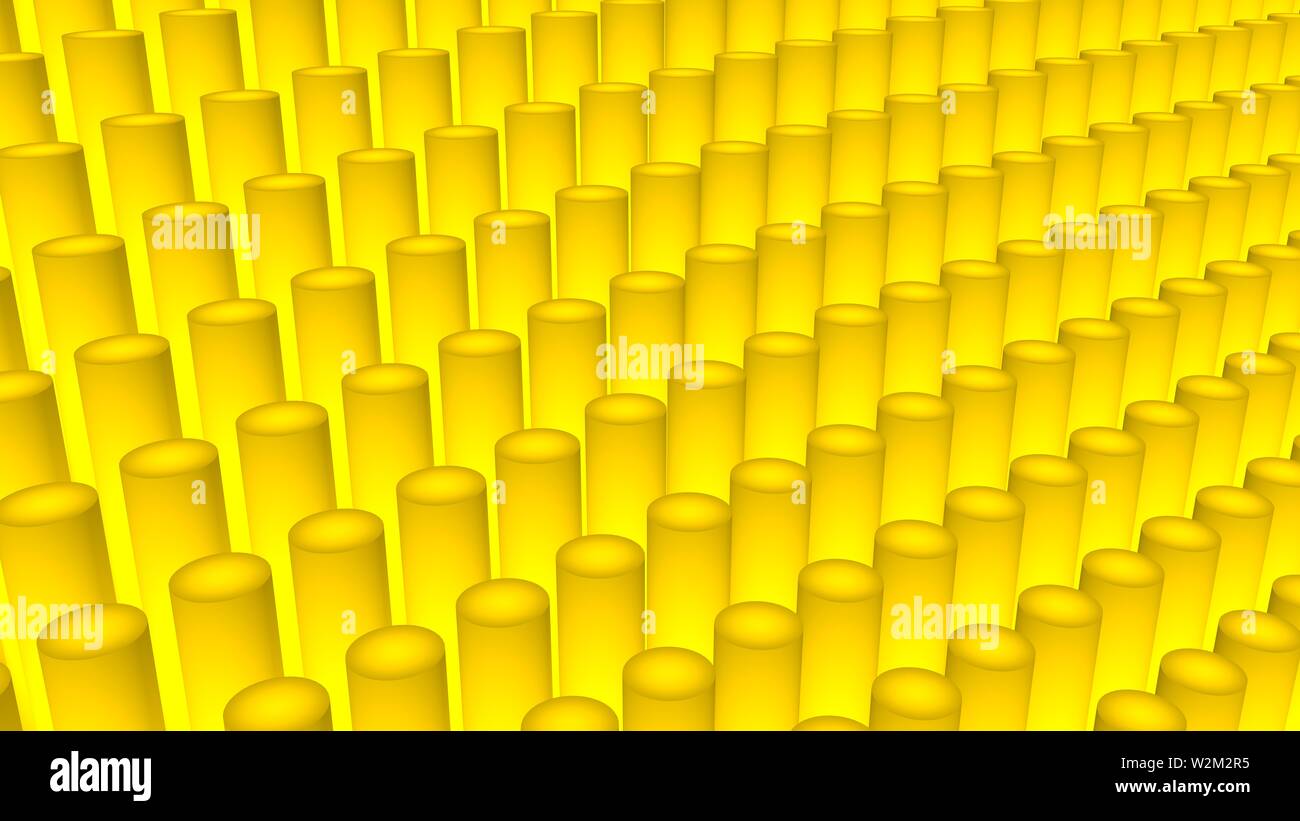 Bright colorful, dynamic and shiny solid rods floating in a wavy shape background.. 3d rendered background of Stock Photohttps://www.alamy.com/image-license-details/?v=1https://www.alamy.com/bright-colorful-dynamic-and-shiny-solid-rods-floating-in-a-wavy-shape-background-3d-rendered-background-of-image259826089.html
Bright colorful, dynamic and shiny solid rods floating in a wavy shape background.. 3d rendered background of Stock Photohttps://www.alamy.com/image-license-details/?v=1https://www.alamy.com/bright-colorful-dynamic-and-shiny-solid-rods-floating-in-a-wavy-shape-background-3d-rendered-background-of-image259826089.htmlRFW2M2R5–Bright colorful, dynamic and shiny solid rods floating in a wavy shape background.. 3d rendered background of
 . Deep-ocean biodeterioration of materials. Materials; Marine sediments. Plastic Specimens. The 3-foot-long solid plastic rods and vinyl tubes recovered after 24 months on the sea floor in 5,640 feet of water are shown in Figure 26. There were numerous borer holes present underneath the area where large wood bait pieces were fitted over the plastic specimens (Figure 27). The holes ranged from shallow to deep. The lower section, exposed about 0.5 foot above the sediment layer, had more numerous borer holes than on the upper sections, which were exposed about 3 feet above the sediment. In other Stock Photohttps://www.alamy.com/image-license-details/?v=1https://www.alamy.com/deep-ocean-biodeterioration-of-materials-materials-marine-sediments-plastic-specimens-the-3-foot-long-solid-plastic-rods-and-vinyl-tubes-recovered-after-24-months-on-the-sea-floor-in-5640-feet-of-water-are-shown-in-figure-26-there-were-numerous-borer-holes-present-underneath-the-area-where-large-wood-bait-pieces-were-fitted-over-the-plastic-specimens-figure-27-the-holes-ranged-from-shallow-to-deep-the-lower-section-exposed-about-05-foot-above-the-sediment-layer-had-more-numerous-borer-holes-than-on-the-upper-sections-which-were-exposed-about-3-feet-above-the-sediment-in-other-image216082574.html
. Deep-ocean biodeterioration of materials. Materials; Marine sediments. Plastic Specimens. The 3-foot-long solid plastic rods and vinyl tubes recovered after 24 months on the sea floor in 5,640 feet of water are shown in Figure 26. There were numerous borer holes present underneath the area where large wood bait pieces were fitted over the plastic specimens (Figure 27). The holes ranged from shallow to deep. The lower section, exposed about 0.5 foot above the sediment layer, had more numerous borer holes than on the upper sections, which were exposed about 3 feet above the sediment. In other Stock Photohttps://www.alamy.com/image-license-details/?v=1https://www.alamy.com/deep-ocean-biodeterioration-of-materials-materials-marine-sediments-plastic-specimens-the-3-foot-long-solid-plastic-rods-and-vinyl-tubes-recovered-after-24-months-on-the-sea-floor-in-5640-feet-of-water-are-shown-in-figure-26-there-were-numerous-borer-holes-present-underneath-the-area-where-large-wood-bait-pieces-were-fitted-over-the-plastic-specimens-figure-27-the-holes-ranged-from-shallow-to-deep-the-lower-section-exposed-about-05-foot-above-the-sediment-layer-had-more-numerous-borer-holes-than-on-the-upper-sections-which-were-exposed-about-3-feet-above-the-sediment-in-other-image216082574.htmlRMPFFBEP–. Deep-ocean biodeterioration of materials. Materials; Marine sediments. Plastic Specimens. The 3-foot-long solid plastic rods and vinyl tubes recovered after 24 months on the sea floor in 5,640 feet of water are shown in Figure 26. There were numerous borer holes present underneath the area where large wood bait pieces were fitted over the plastic specimens (Figure 27). The holes ranged from shallow to deep. The lower section, exposed about 0.5 foot above the sediment layer, had more numerous borer holes than on the upper sections, which were exposed about 3 feet above the sediment. In other
 . Deep-ocean biodeterioration of materials. Materials; Marine sediments. Figure B-23. Borers in pine wood bait piece for plastic rods and tubes. Some were 1/8 inch in diameter and had penetrated over 5/16 inch.. Please note that these images are extracted from scanned page images that may have been digitally enhanced for readability - coloration and appearance of these illustrations may not perfectly resemble the original work.. Muraoka, James S; Naval Civil Engineering Laboratory (Port Hueneme, Calif. ). Port Hueneme, Calif. : U. S. Naval Civil Engineering Laboratory Stock Photohttps://www.alamy.com/image-license-details/?v=1https://www.alamy.com/deep-ocean-biodeterioration-of-materials-materials-marine-sediments-figure-b-23-borers-in-pine-wood-bait-piece-for-plastic-rods-and-tubes-some-were-18-inch-in-diameter-and-had-penetrated-over-516-inch-please-note-that-these-images-are-extracted-from-scanned-page-images-that-may-have-been-digitally-enhanced-for-readability-coloration-and-appearance-of-these-illustrations-may-not-perfectly-resemble-the-original-work-muraoka-james-s-naval-civil-engineering-laboratory-port-hueneme-calif-port-hueneme-calif-u-s-naval-civil-engineering-laboratory-image231714063.html
. Deep-ocean biodeterioration of materials. Materials; Marine sediments. Figure B-23. Borers in pine wood bait piece for plastic rods and tubes. Some were 1/8 inch in diameter and had penetrated over 5/16 inch.. Please note that these images are extracted from scanned page images that may have been digitally enhanced for readability - coloration and appearance of these illustrations may not perfectly resemble the original work.. Muraoka, James S; Naval Civil Engineering Laboratory (Port Hueneme, Calif. ). Port Hueneme, Calif. : U. S. Naval Civil Engineering Laboratory Stock Photohttps://www.alamy.com/image-license-details/?v=1https://www.alamy.com/deep-ocean-biodeterioration-of-materials-materials-marine-sediments-figure-b-23-borers-in-pine-wood-bait-piece-for-plastic-rods-and-tubes-some-were-18-inch-in-diameter-and-had-penetrated-over-516-inch-please-note-that-these-images-are-extracted-from-scanned-page-images-that-may-have-been-digitally-enhanced-for-readability-coloration-and-appearance-of-these-illustrations-may-not-perfectly-resemble-the-original-work-muraoka-james-s-naval-civil-engineering-laboratory-port-hueneme-calif-port-hueneme-calif-u-s-naval-civil-engineering-laboratory-image231714063.htmlRMRCYDJ7–. Deep-ocean biodeterioration of materials. Materials; Marine sediments. Figure B-23. Borers in pine wood bait piece for plastic rods and tubes. Some were 1/8 inch in diameter and had penetrated over 5/16 inch.. Please note that these images are extracted from scanned page images that may have been digitally enhanced for readability - coloration and appearance of these illustrations may not perfectly resemble the original work.. Muraoka, James S; Naval Civil Engineering Laboratory (Port Hueneme, Calif. ). Port Hueneme, Calif. : U. S. Naval Civil Engineering Laboratory
 . Deep-ocean biodeterioration of materials. Materials; Marine sediments. (a) Partial view. ri i â I P I ' 9 -- ^B- F^ ; (b) Cioseup view. Figure 22. Numerous shallow and deep holes made by borers in plastic rods and tubes underneath the area of wooden bait piece. 29. Please note that these images are extracted from scanned page images that may have been digitally enhanced for readability - coloration and appearance of these illustrations may not perfectly resemble the original work.. Muraoka, James S; Naval Civil Engineering Laboratory (Port Hueneme, Calif. ). Port Hueneme, Calif. : U. S. Nava Stock Photohttps://www.alamy.com/image-license-details/?v=1https://www.alamy.com/deep-ocean-biodeterioration-of-materials-materials-marine-sediments-a-partial-view-ri-i-i-p-i-9-b-f-b-cioseup-view-figure-22-numerous-shallow-and-deep-holes-made-by-borers-in-plastic-rods-and-tubes-underneath-the-area-of-wooden-bait-piece-29-please-note-that-these-images-are-extracted-from-scanned-page-images-that-may-have-been-digitally-enhanced-for-readability-coloration-and-appearance-of-these-illustrations-may-not-perfectly-resemble-the-original-work-muraoka-james-s-naval-civil-engineering-laboratory-port-hueneme-calif-port-hueneme-calif-u-s-nava-image216082757.html
. Deep-ocean biodeterioration of materials. Materials; Marine sediments. (a) Partial view. ri i â I P I ' 9 -- ^B- F^ ; (b) Cioseup view. Figure 22. Numerous shallow and deep holes made by borers in plastic rods and tubes underneath the area of wooden bait piece. 29. Please note that these images are extracted from scanned page images that may have been digitally enhanced for readability - coloration and appearance of these illustrations may not perfectly resemble the original work.. Muraoka, James S; Naval Civil Engineering Laboratory (Port Hueneme, Calif. ). Port Hueneme, Calif. : U. S. Nava Stock Photohttps://www.alamy.com/image-license-details/?v=1https://www.alamy.com/deep-ocean-biodeterioration-of-materials-materials-marine-sediments-a-partial-view-ri-i-i-p-i-9-b-f-b-cioseup-view-figure-22-numerous-shallow-and-deep-holes-made-by-borers-in-plastic-rods-and-tubes-underneath-the-area-of-wooden-bait-piece-29-please-note-that-these-images-are-extracted-from-scanned-page-images-that-may-have-been-digitally-enhanced-for-readability-coloration-and-appearance-of-these-illustrations-may-not-perfectly-resemble-the-original-work-muraoka-james-s-naval-civil-engineering-laboratory-port-hueneme-calif-port-hueneme-calif-u-s-nava-image216082757.htmlRMPFFBN9–. Deep-ocean biodeterioration of materials. Materials; Marine sediments. (a) Partial view. ri i â I P I ' 9 -- ^B- F^ ; (b) Cioseup view. Figure 22. Numerous shallow and deep holes made by borers in plastic rods and tubes underneath the area of wooden bait piece. 29. Please note that these images are extracted from scanned page images that may have been digitally enhanced for readability - coloration and appearance of these illustrations may not perfectly resemble the original work.. Muraoka, James S; Naval Civil Engineering Laboratory (Port Hueneme, Calif. ). Port Hueneme, Calif. : U. S. Nava
 . Deep-ocean biodeterioration of materials. Materials; Marine sediments. Figure B-23. Borers in pine wood bait piece for plastic rods and tubes. Some were 1/8 inch in diameter and had penetrated over 5/16 inch.. Figure B-24. Borers in pine wood bait piece. They are concentrated in an area where the rope specimens were resting against the wood. 40. Please note that these images are extracted from scanned page images that may have been digitally enhanced for readability - coloration and appearance of these illustrations may not perfectly resemble the original work.. Muraoka, James S; Naval Civil Stock Photohttps://www.alamy.com/image-license-details/?v=1https://www.alamy.com/deep-ocean-biodeterioration-of-materials-materials-marine-sediments-figure-b-23-borers-in-pine-wood-bait-piece-for-plastic-rods-and-tubes-some-were-18-inch-in-diameter-and-had-penetrated-over-516-inch-figure-b-24-borers-in-pine-wood-bait-piece-they-are-concentrated-in-an-area-where-the-rope-specimens-were-resting-against-the-wood-40-please-note-that-these-images-are-extracted-from-scanned-page-images-that-may-have-been-digitally-enhanced-for-readability-coloration-and-appearance-of-these-illustrations-may-not-perfectly-resemble-the-original-work-muraoka-james-s-naval-civil-image231714059.html
. Deep-ocean biodeterioration of materials. Materials; Marine sediments. Figure B-23. Borers in pine wood bait piece for plastic rods and tubes. Some were 1/8 inch in diameter and had penetrated over 5/16 inch.. Figure B-24. Borers in pine wood bait piece. They are concentrated in an area where the rope specimens were resting against the wood. 40. Please note that these images are extracted from scanned page images that may have been digitally enhanced for readability - coloration and appearance of these illustrations may not perfectly resemble the original work.. Muraoka, James S; Naval Civil Stock Photohttps://www.alamy.com/image-license-details/?v=1https://www.alamy.com/deep-ocean-biodeterioration-of-materials-materials-marine-sediments-figure-b-23-borers-in-pine-wood-bait-piece-for-plastic-rods-and-tubes-some-were-18-inch-in-diameter-and-had-penetrated-over-516-inch-figure-b-24-borers-in-pine-wood-bait-piece-they-are-concentrated-in-an-area-where-the-rope-specimens-were-resting-against-the-wood-40-please-note-that-these-images-are-extracted-from-scanned-page-images-that-may-have-been-digitally-enhanced-for-readability-coloration-and-appearance-of-these-illustrations-may-not-perfectly-resemble-the-original-work-muraoka-james-s-naval-civil-image231714059.htmlRMRCYDJ3–. Deep-ocean biodeterioration of materials. Materials; Marine sediments. Figure B-23. Borers in pine wood bait piece for plastic rods and tubes. Some were 1/8 inch in diameter and had penetrated over 5/16 inch.. Figure B-24. Borers in pine wood bait piece. They are concentrated in an area where the rope specimens were resting against the wood. 40. Please note that these images are extracted from scanned page images that may have been digitally enhanced for readability - coloration and appearance of these illustrations may not perfectly resemble the original work.. Muraoka, James S; Naval Civil
 . Deep-ocean biodeterioration of materials. Materials; Marine sediments. (a) Partial view. ri i â I P I ' 9 -- ^B- F^ ; (b) Cioseup view. Figure 22. Numerous shallow and deep holes made by borers in plastic rods and tubes underneath the area of wooden bait piece. 29. Please note that these images are extracted from scanned page images that may have been digitally enhanced for readability - coloration and appearance of these illustrations may not perfectly resemble the original work.. Muraoka, James S; Naval Civil Engineering Laboratory (Port Hueneme, Calif. ). Port Hueneme, Calif. : U. S. Nava Stock Photohttps://www.alamy.com/image-license-details/?v=1https://www.alamy.com/deep-ocean-biodeterioration-of-materials-materials-marine-sediments-a-partial-view-ri-i-i-p-i-9-b-f-b-cioseup-view-figure-22-numerous-shallow-and-deep-holes-made-by-borers-in-plastic-rods-and-tubes-underneath-the-area-of-wooden-bait-piece-29-please-note-that-these-images-are-extracted-from-scanned-page-images-that-may-have-been-digitally-enhanced-for-readability-coloration-and-appearance-of-these-illustrations-may-not-perfectly-resemble-the-original-work-muraoka-james-s-naval-civil-engineering-laboratory-port-hueneme-calif-port-hueneme-calif-u-s-nava-image231713948.html
. Deep-ocean biodeterioration of materials. Materials; Marine sediments. (a) Partial view. ri i â I P I ' 9 -- ^B- F^ ; (b) Cioseup view. Figure 22. Numerous shallow and deep holes made by borers in plastic rods and tubes underneath the area of wooden bait piece. 29. Please note that these images are extracted from scanned page images that may have been digitally enhanced for readability - coloration and appearance of these illustrations may not perfectly resemble the original work.. Muraoka, James S; Naval Civil Engineering Laboratory (Port Hueneme, Calif. ). Port Hueneme, Calif. : U. S. Nava Stock Photohttps://www.alamy.com/image-license-details/?v=1https://www.alamy.com/deep-ocean-biodeterioration-of-materials-materials-marine-sediments-a-partial-view-ri-i-i-p-i-9-b-f-b-cioseup-view-figure-22-numerous-shallow-and-deep-holes-made-by-borers-in-plastic-rods-and-tubes-underneath-the-area-of-wooden-bait-piece-29-please-note-that-these-images-are-extracted-from-scanned-page-images-that-may-have-been-digitally-enhanced-for-readability-coloration-and-appearance-of-these-illustrations-may-not-perfectly-resemble-the-original-work-muraoka-james-s-naval-civil-engineering-laboratory-port-hueneme-calif-port-hueneme-calif-u-s-nava-image231713948.htmlRMRCYDE4–. Deep-ocean biodeterioration of materials. Materials; Marine sediments. (a) Partial view. ri i â I P I ' 9 -- ^B- F^ ; (b) Cioseup view. Figure 22. Numerous shallow and deep holes made by borers in plastic rods and tubes underneath the area of wooden bait piece. 29. Please note that these images are extracted from scanned page images that may have been digitally enhanced for readability - coloration and appearance of these illustrations may not perfectly resemble the original work.. Muraoka, James S; Naval Civil Engineering Laboratory (Port Hueneme, Calif. ). Port Hueneme, Calif. : U. S. Nava
 . Deep-ocean biodeterioration of materials. Materials; Marine sediments. Figure B-14. Fibers of Manila rope destroyed by marine borers. Hundreds of borers are visible on the rope.. Figure B-15. Three-foot-long plastic rods and tubes after 6 months on the ocean floor. 35. Please note that these images are extracted from scanned page images that may have been digitally enhanced for readability - coloration and appearance of these illustrations may not perfectly resemble the original work.. Muraoka, James S; Naval Civil Engineering Laboratory (Port Hueneme, Calif. ). Port Hueneme, Calif. : U. S. Stock Photohttps://www.alamy.com/image-license-details/?v=1https://www.alamy.com/deep-ocean-biodeterioration-of-materials-materials-marine-sediments-figure-b-14-fibers-of-manila-rope-destroyed-by-marine-borers-hundreds-of-borers-are-visible-on-the-rope-figure-b-15-three-foot-long-plastic-rods-and-tubes-after-6-months-on-the-ocean-floor-35-please-note-that-these-images-are-extracted-from-scanned-page-images-that-may-have-been-digitally-enhanced-for-readability-coloration-and-appearance-of-these-illustrations-may-not-perfectly-resemble-the-original-work-muraoka-james-s-naval-civil-engineering-laboratory-port-hueneme-calif-port-hueneme-calif-u-s-image231804098.html
. Deep-ocean biodeterioration of materials. Materials; Marine sediments. Figure B-14. Fibers of Manila rope destroyed by marine borers. Hundreds of borers are visible on the rope.. Figure B-15. Three-foot-long plastic rods and tubes after 6 months on the ocean floor. 35. Please note that these images are extracted from scanned page images that may have been digitally enhanced for readability - coloration and appearance of these illustrations may not perfectly resemble the original work.. Muraoka, James S; Naval Civil Engineering Laboratory (Port Hueneme, Calif. ). Port Hueneme, Calif. : U. S. Stock Photohttps://www.alamy.com/image-license-details/?v=1https://www.alamy.com/deep-ocean-biodeterioration-of-materials-materials-marine-sediments-figure-b-14-fibers-of-manila-rope-destroyed-by-marine-borers-hundreds-of-borers-are-visible-on-the-rope-figure-b-15-three-foot-long-plastic-rods-and-tubes-after-6-months-on-the-ocean-floor-35-please-note-that-these-images-are-extracted-from-scanned-page-images-that-may-have-been-digitally-enhanced-for-readability-coloration-and-appearance-of-these-illustrations-may-not-perfectly-resemble-the-original-work-muraoka-james-s-naval-civil-engineering-laboratory-port-hueneme-calif-port-hueneme-calif-u-s-image231804098.htmlRMRD3GDP–. Deep-ocean biodeterioration of materials. Materials; Marine sediments. Figure B-14. Fibers of Manila rope destroyed by marine borers. Hundreds of borers are visible on the rope.. Figure B-15. Three-foot-long plastic rods and tubes after 6 months on the ocean floor. 35. Please note that these images are extracted from scanned page images that may have been digitally enhanced for readability - coloration and appearance of these illustrations may not perfectly resemble the original work.. Muraoka, James S; Naval Civil Engineering Laboratory (Port Hueneme, Calif. ). Port Hueneme, Calif. : U. S.